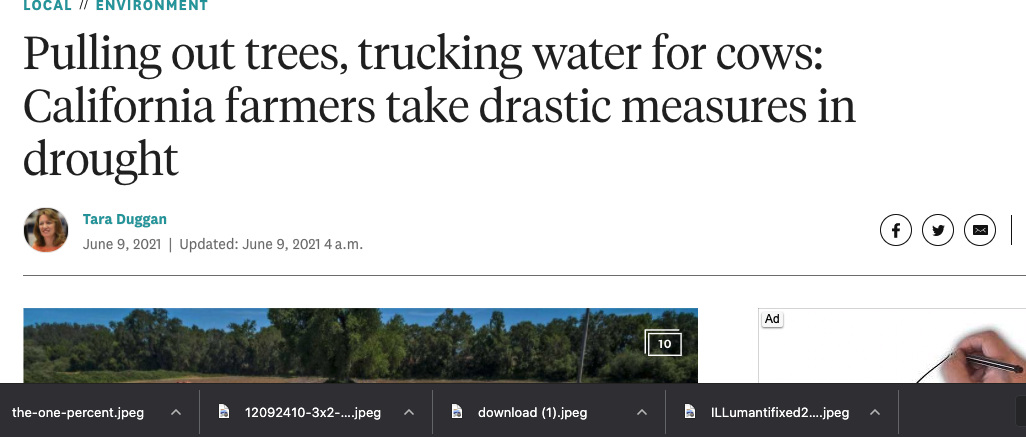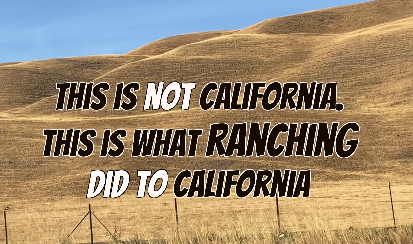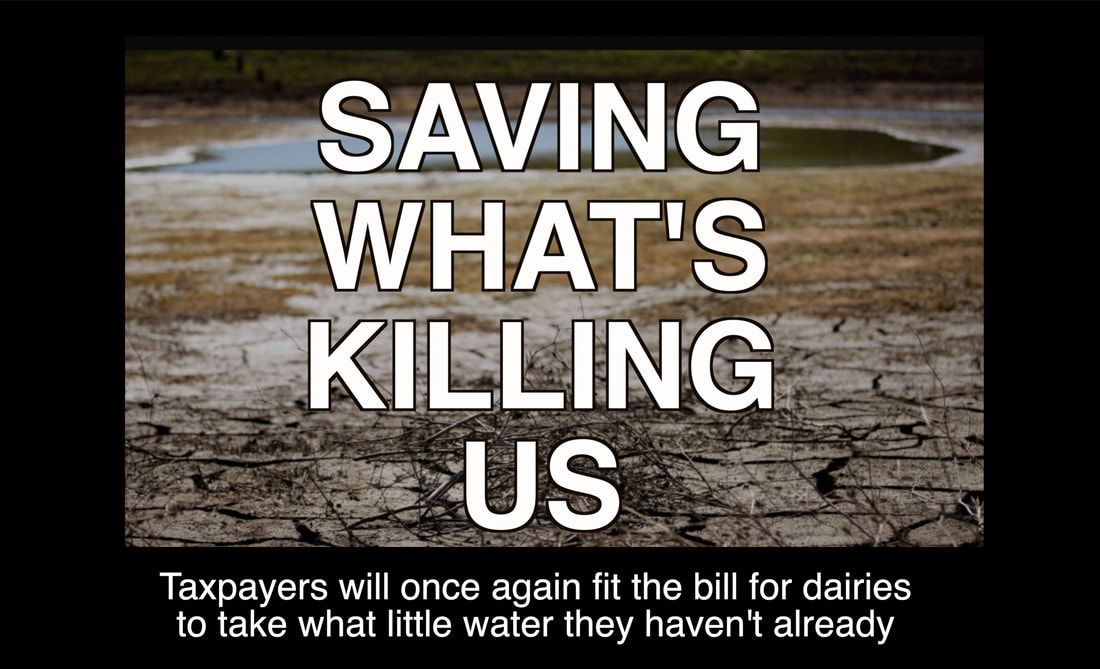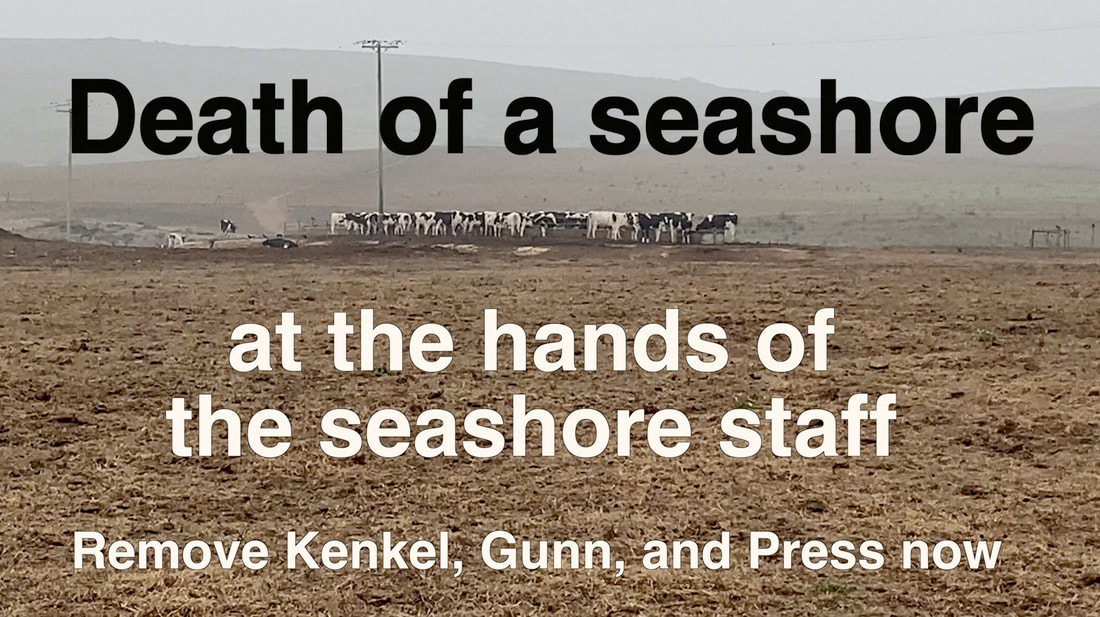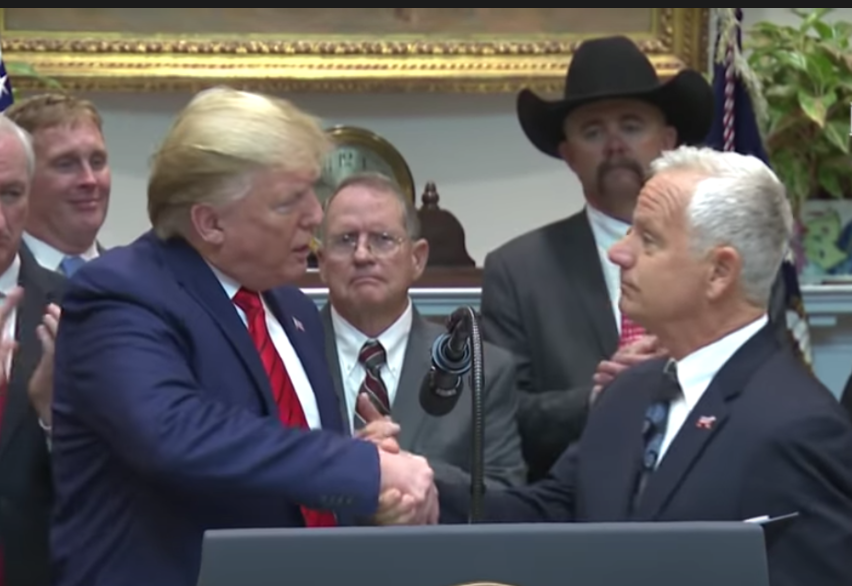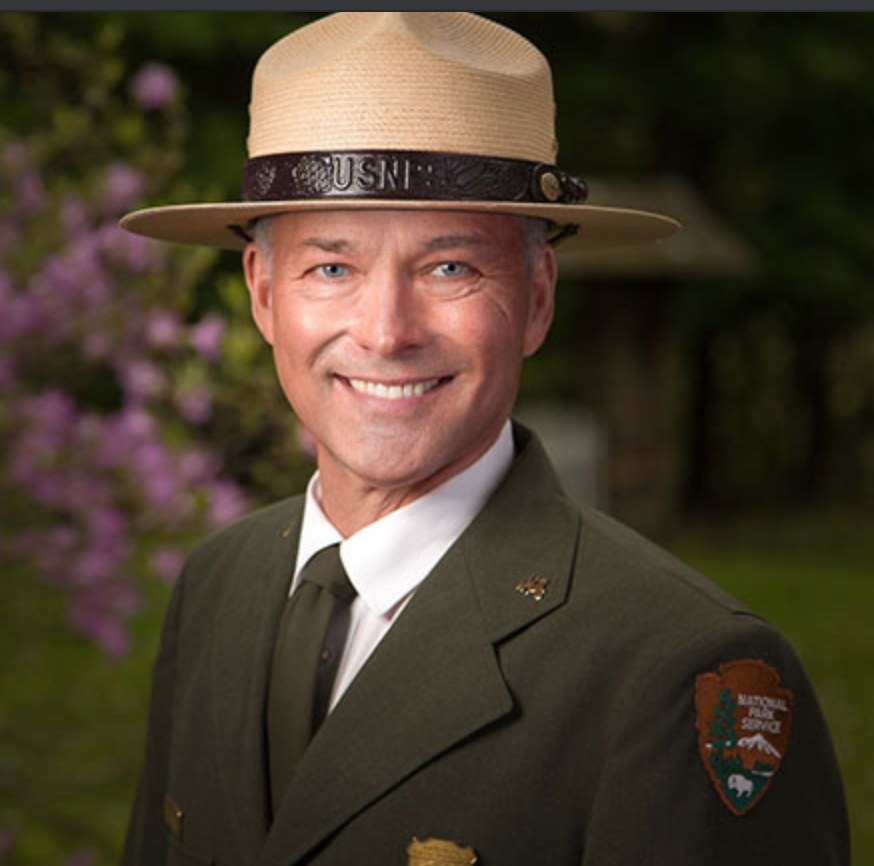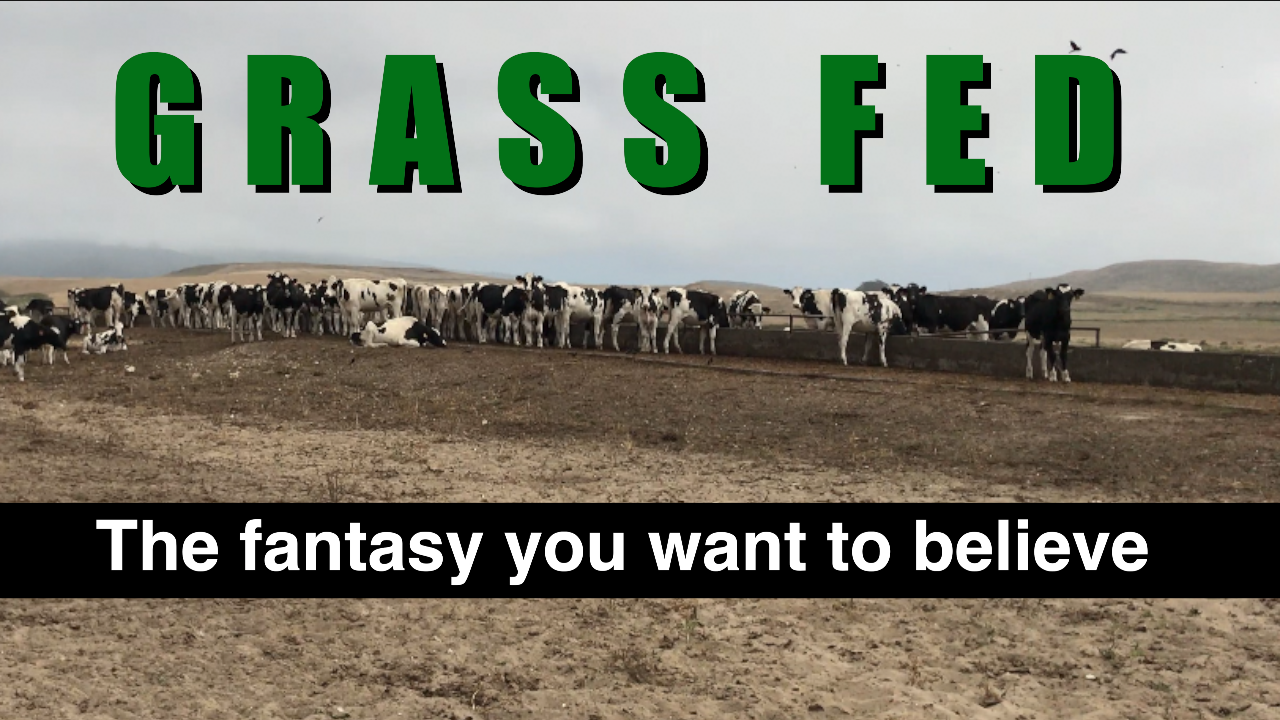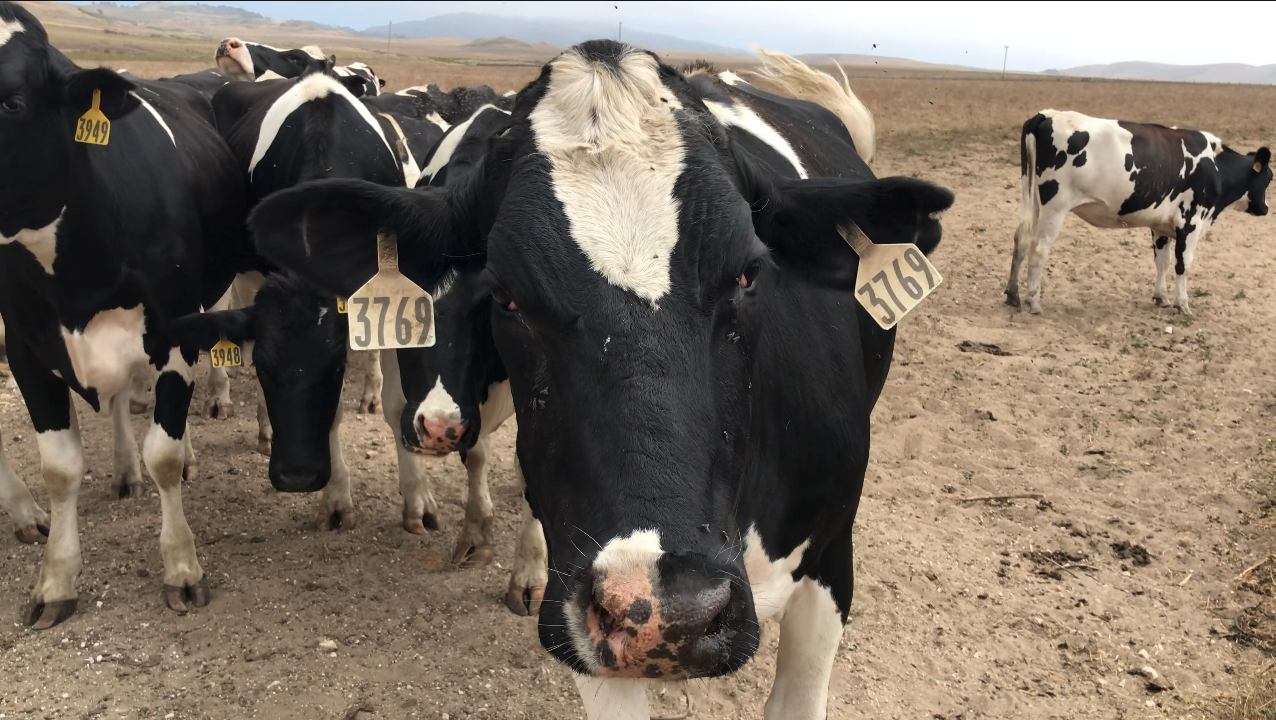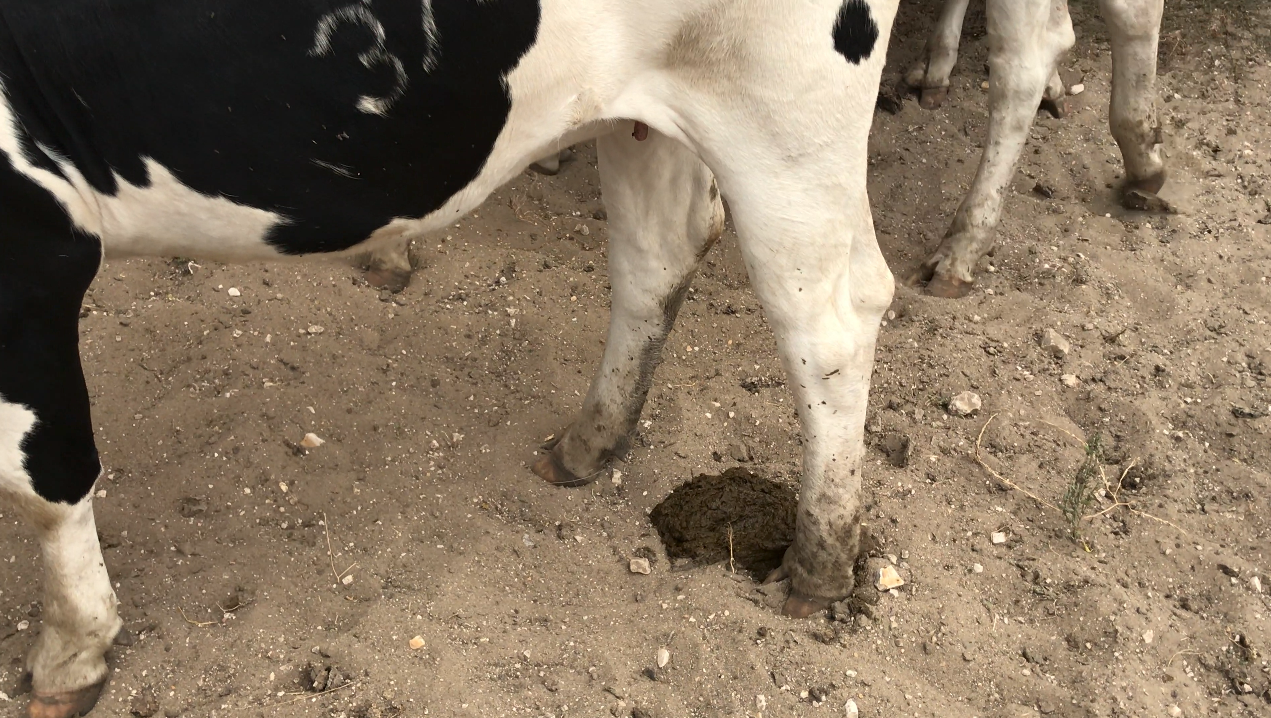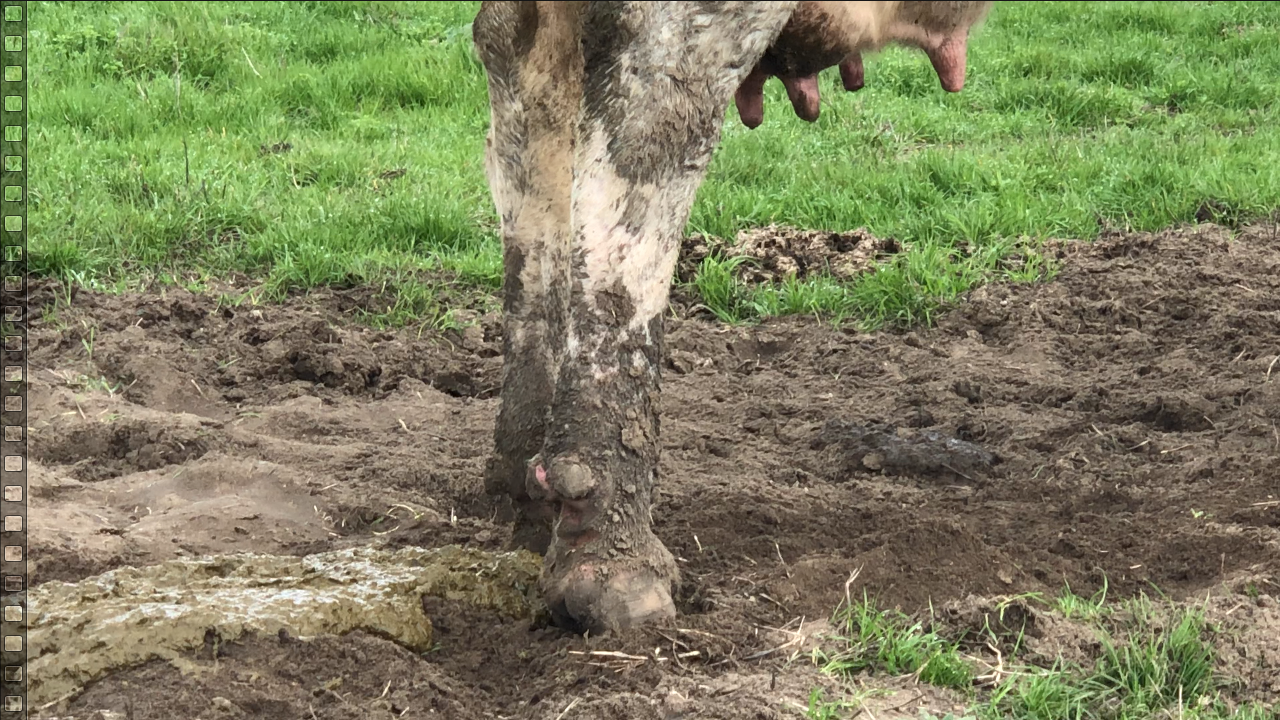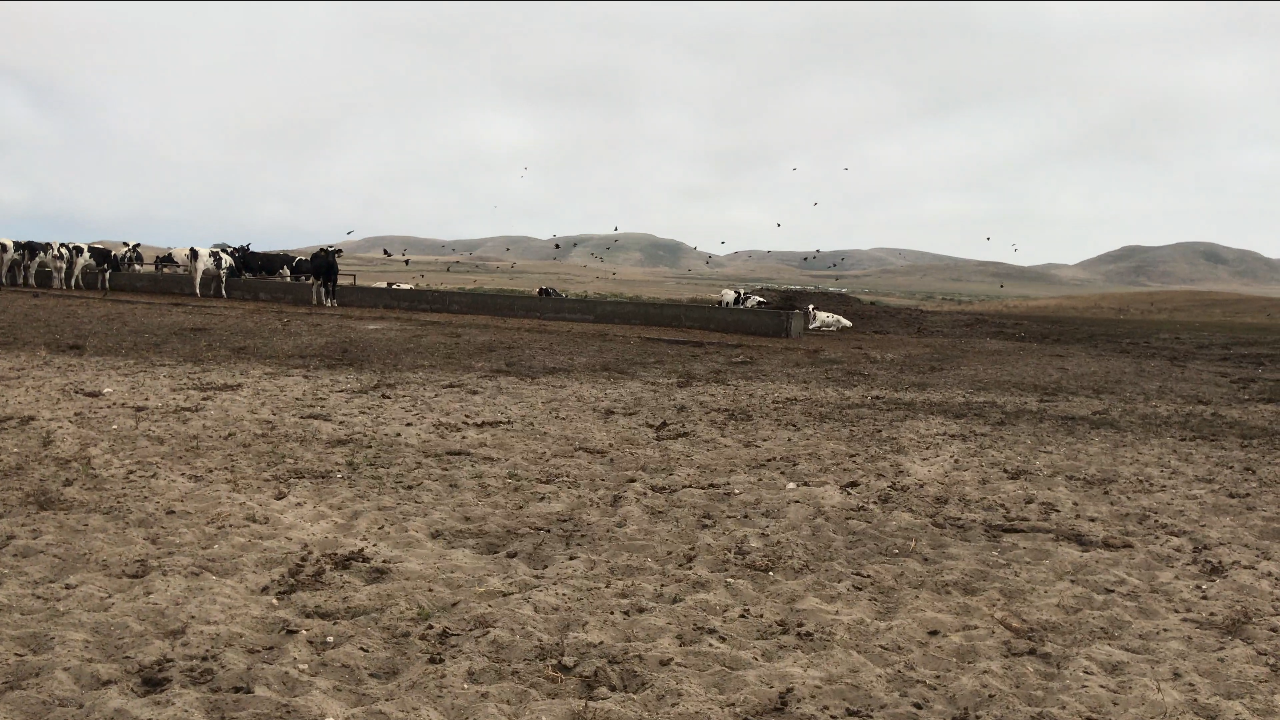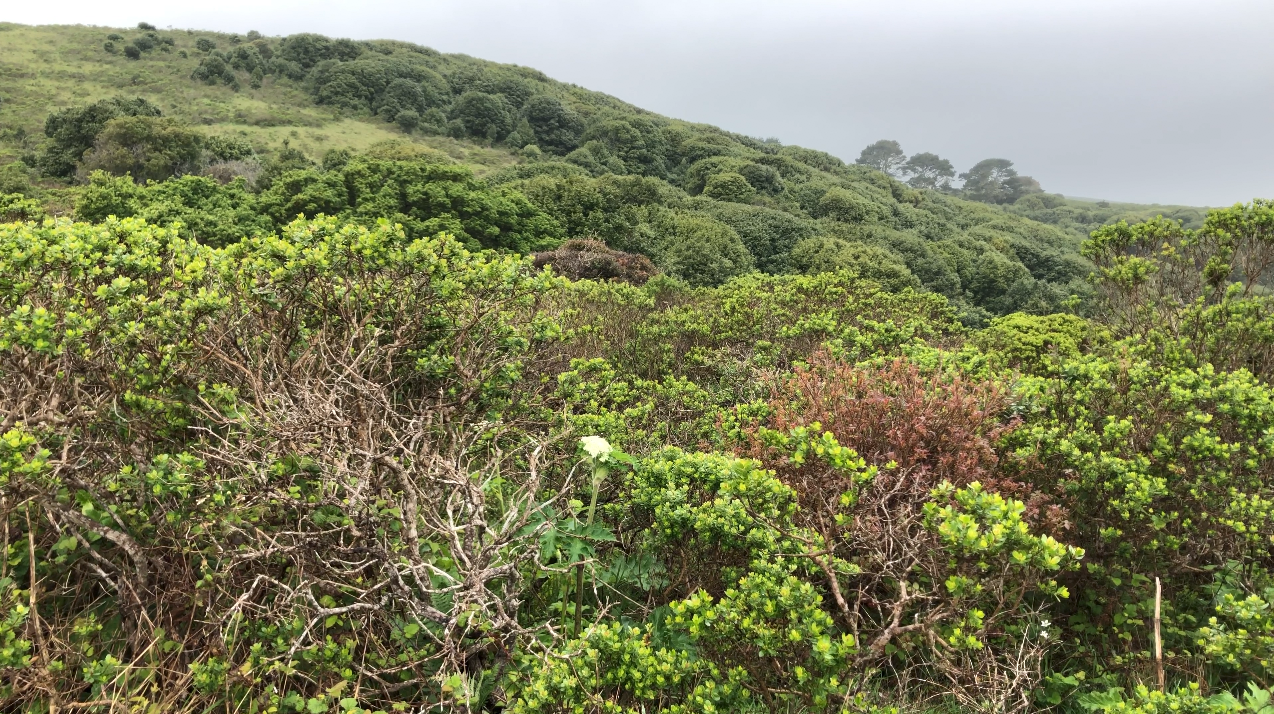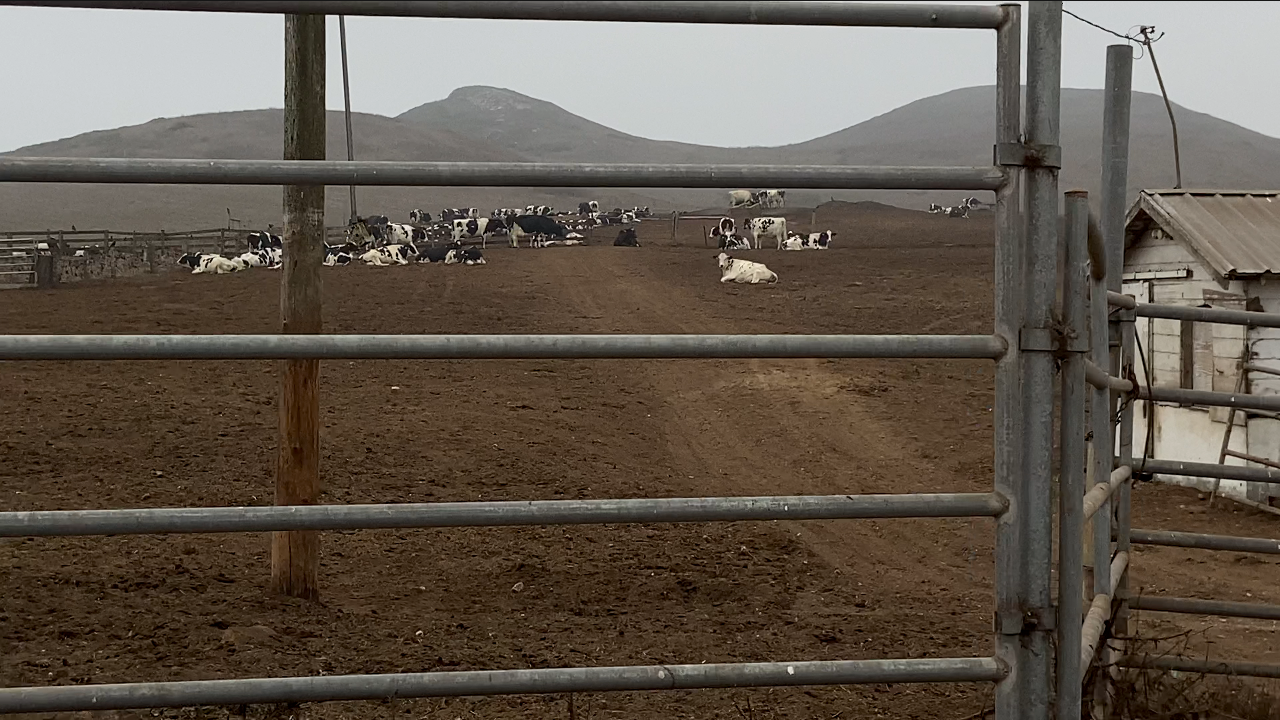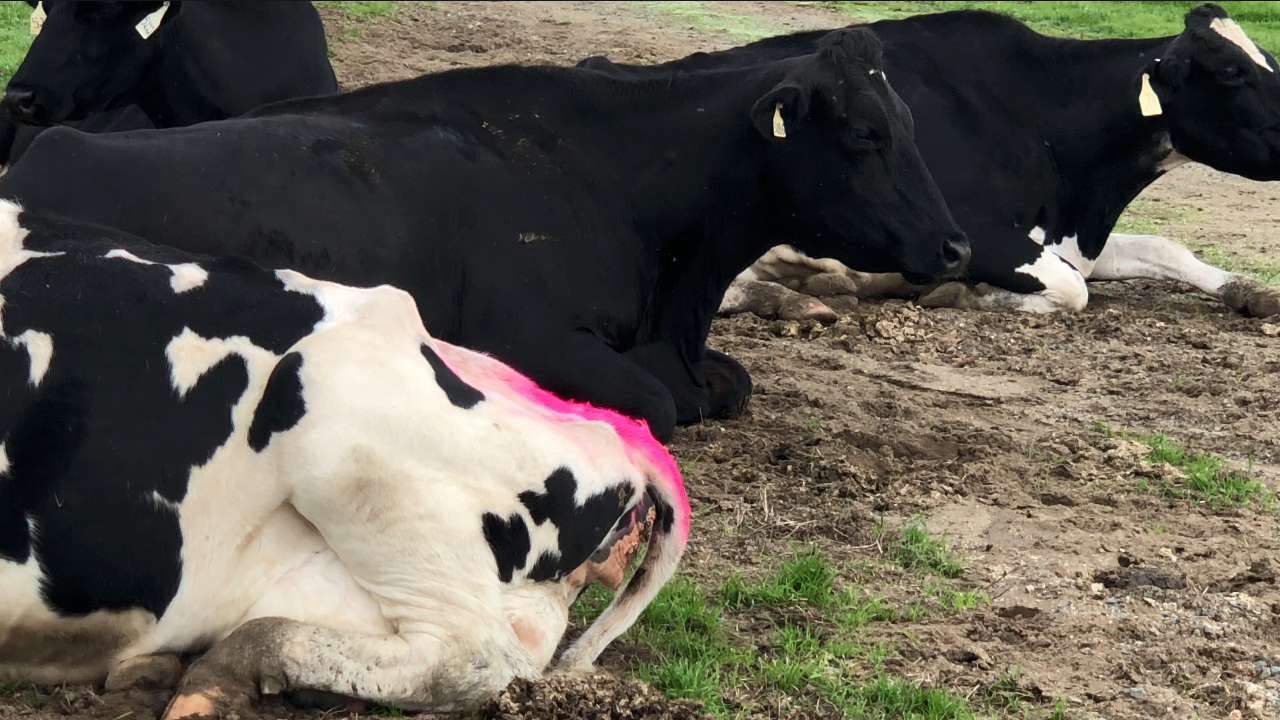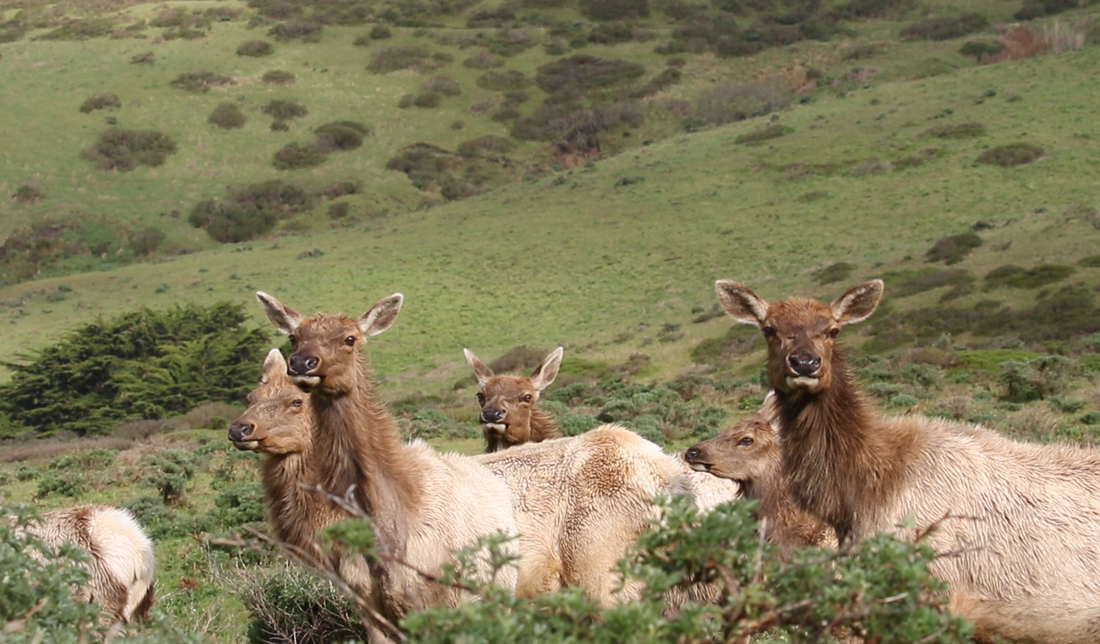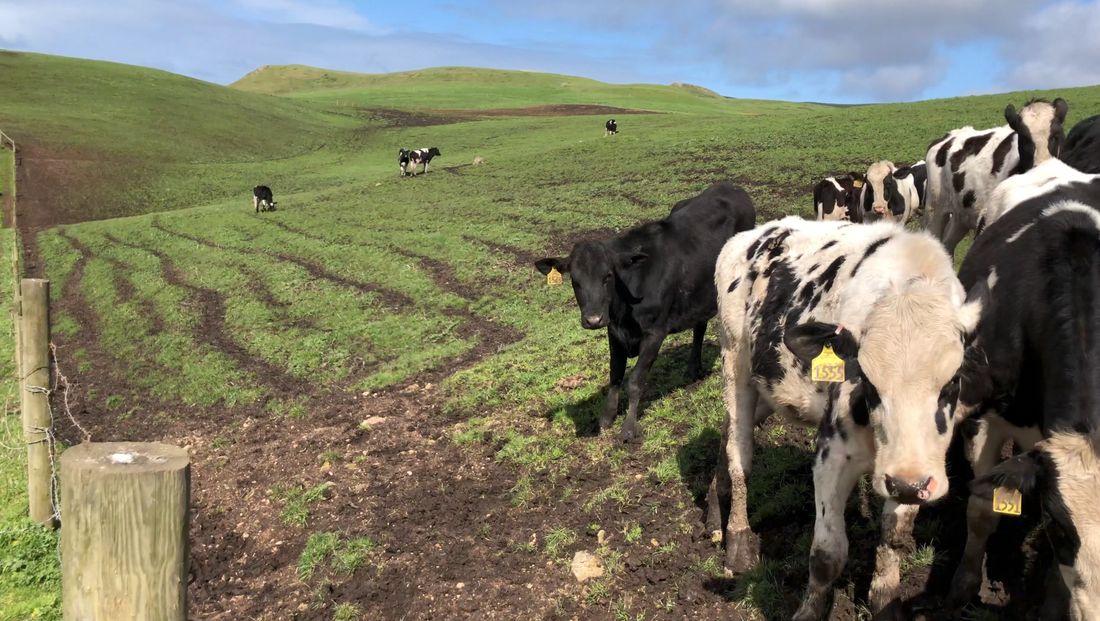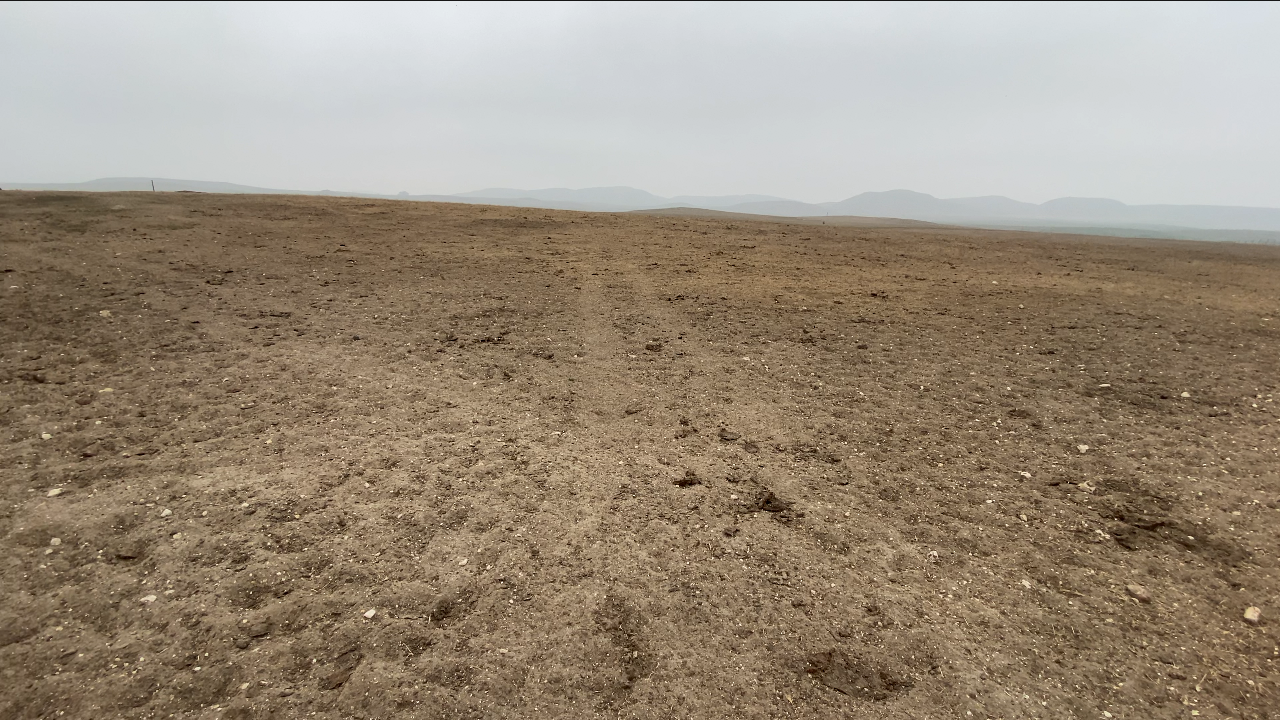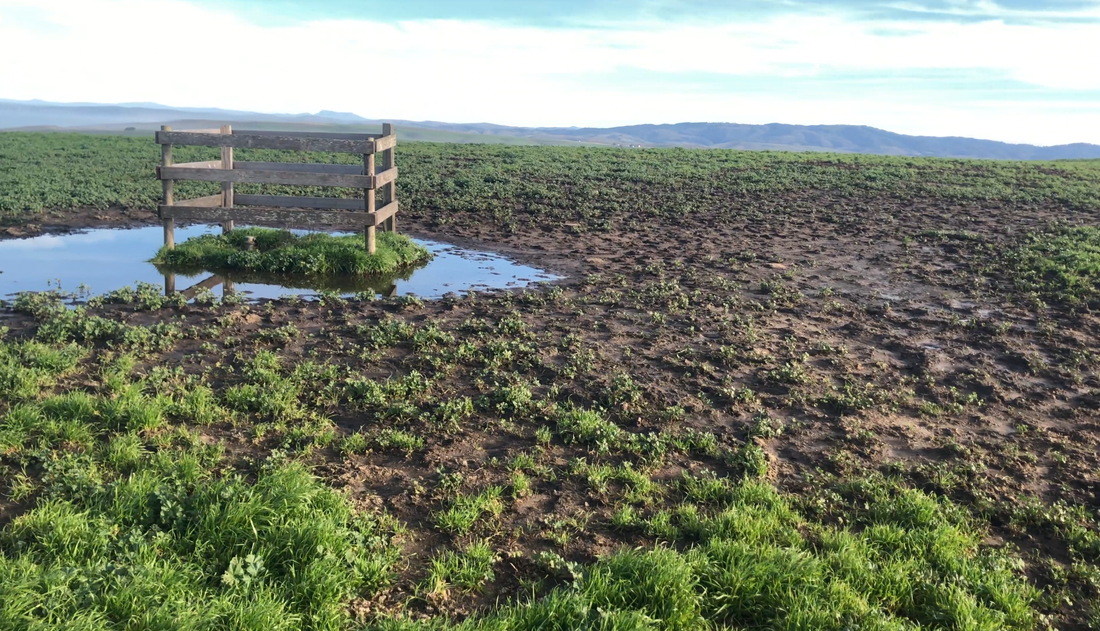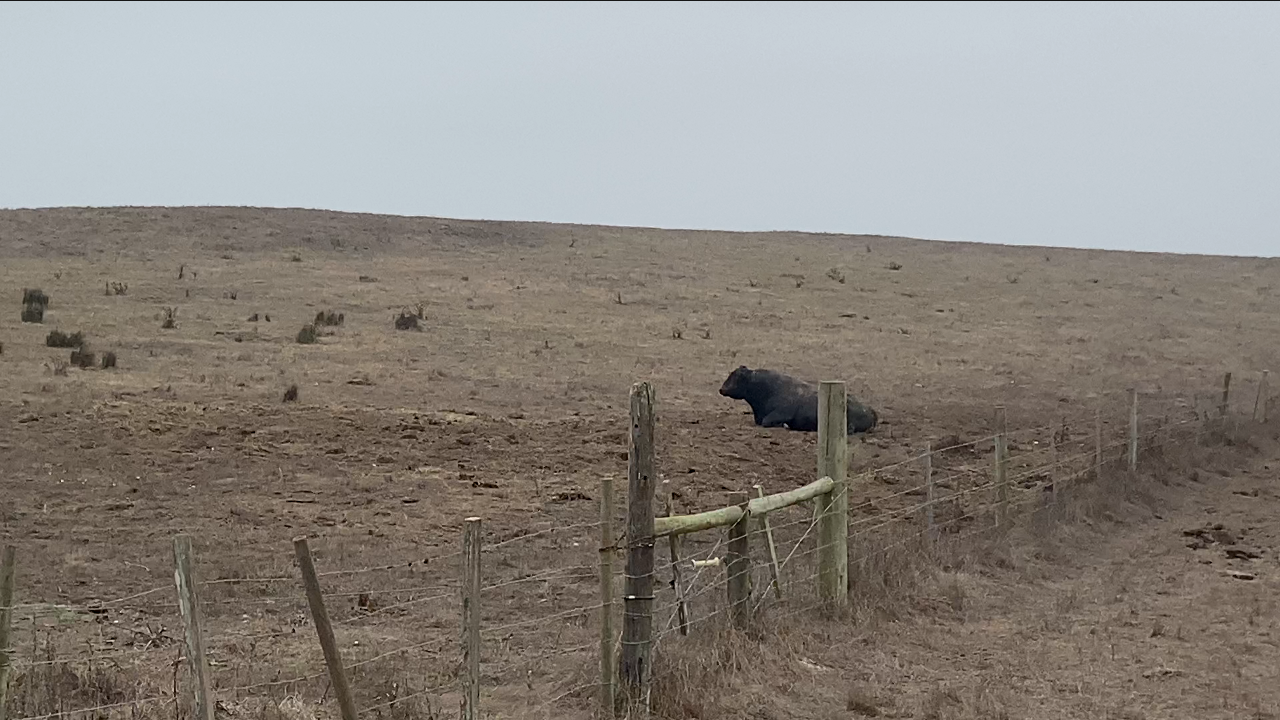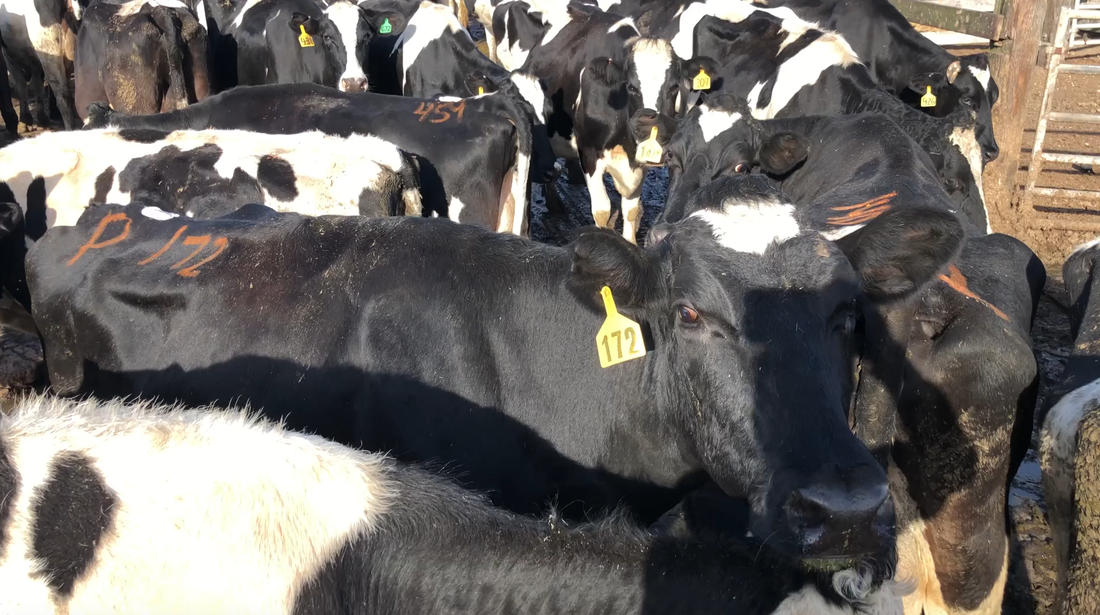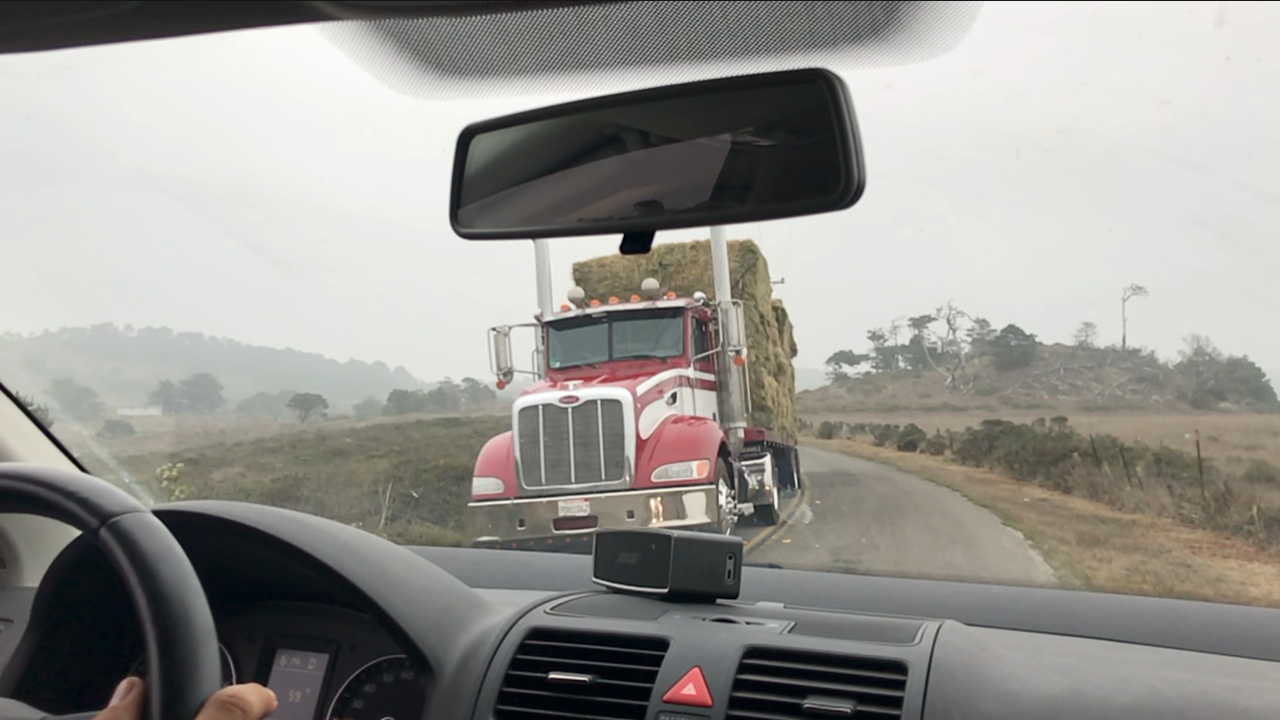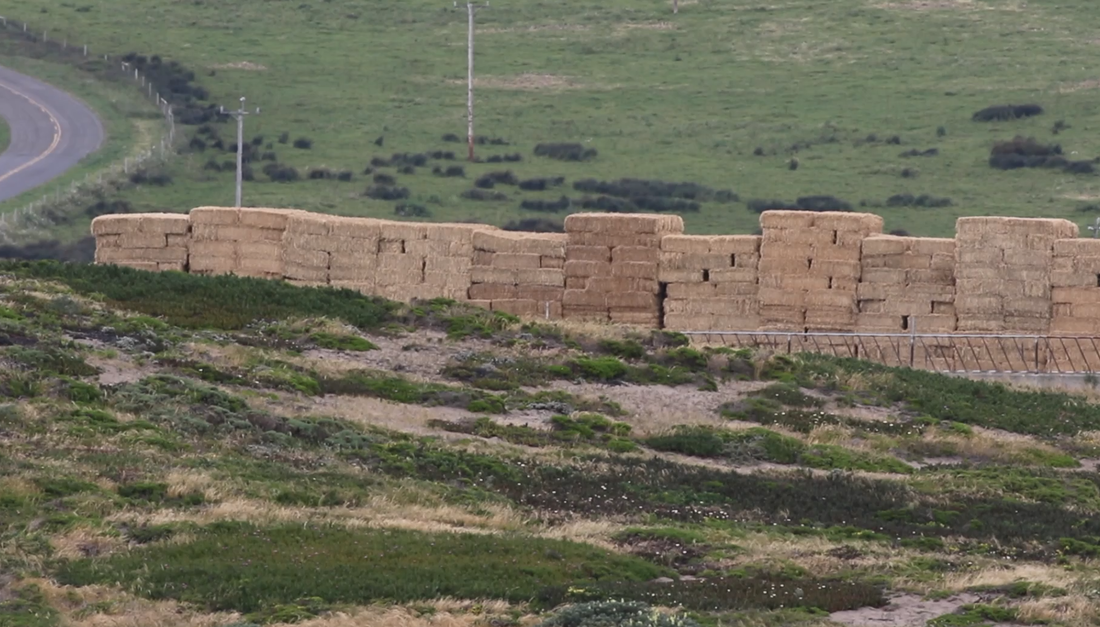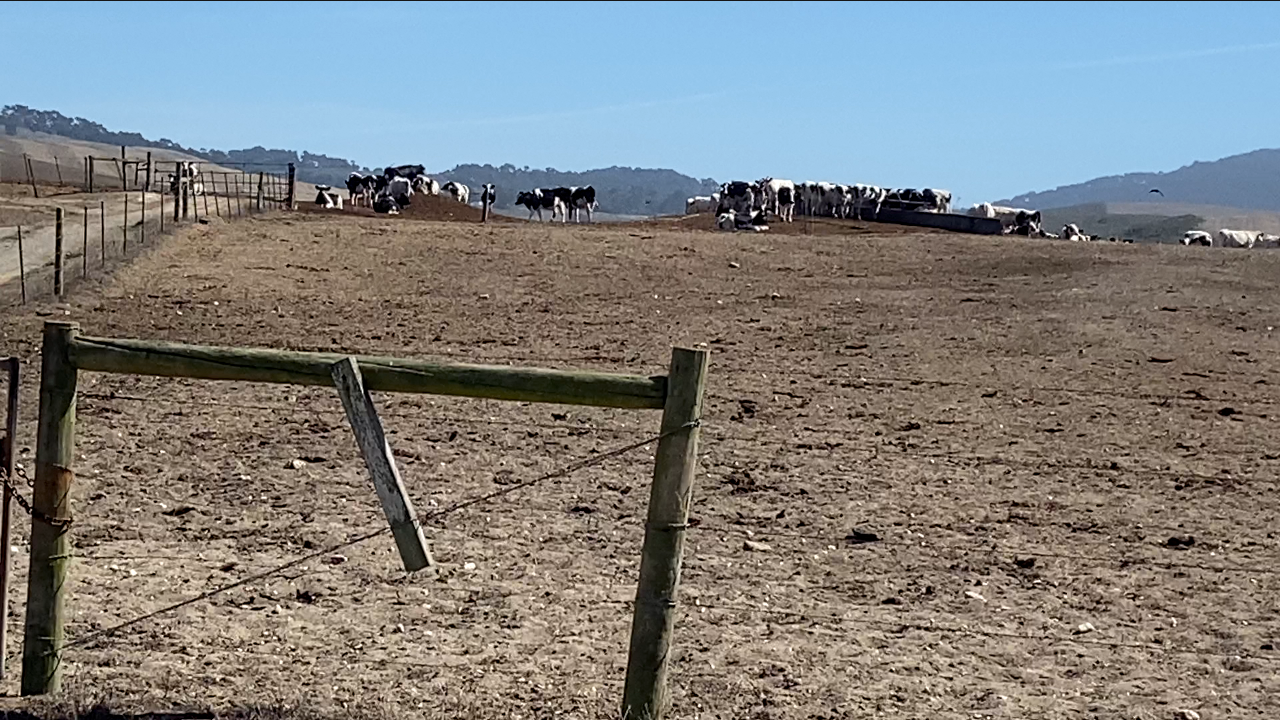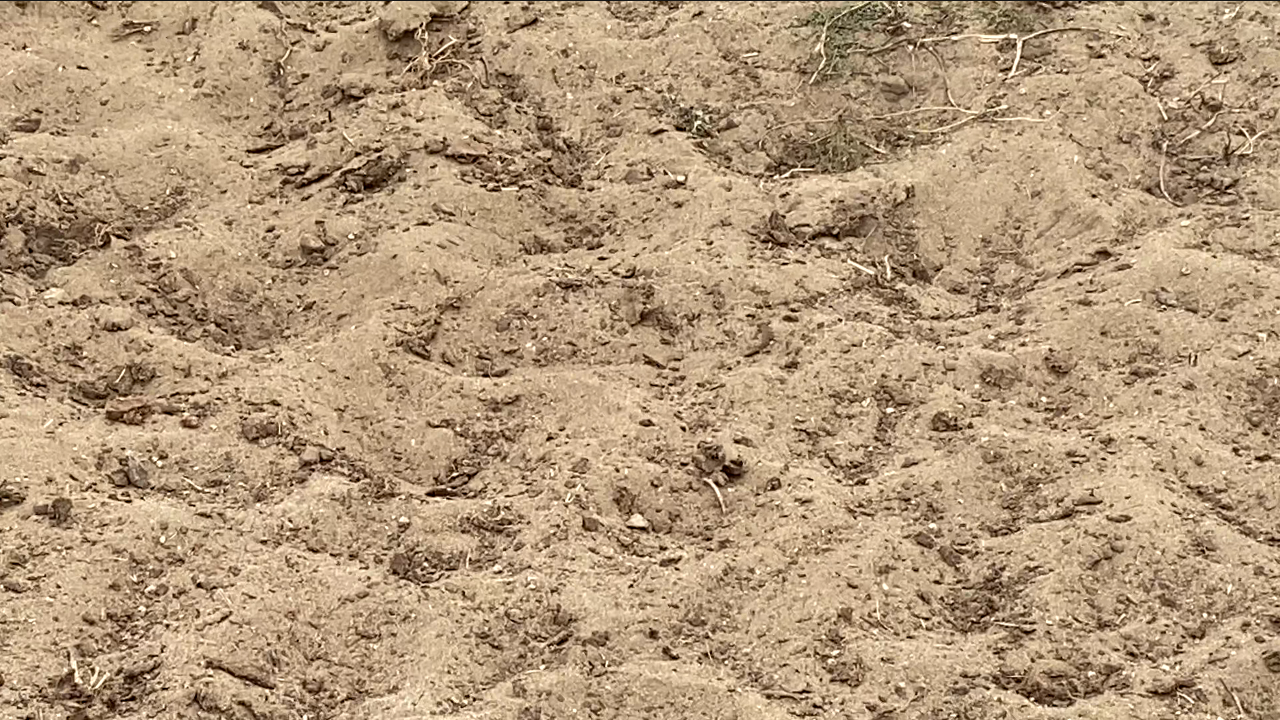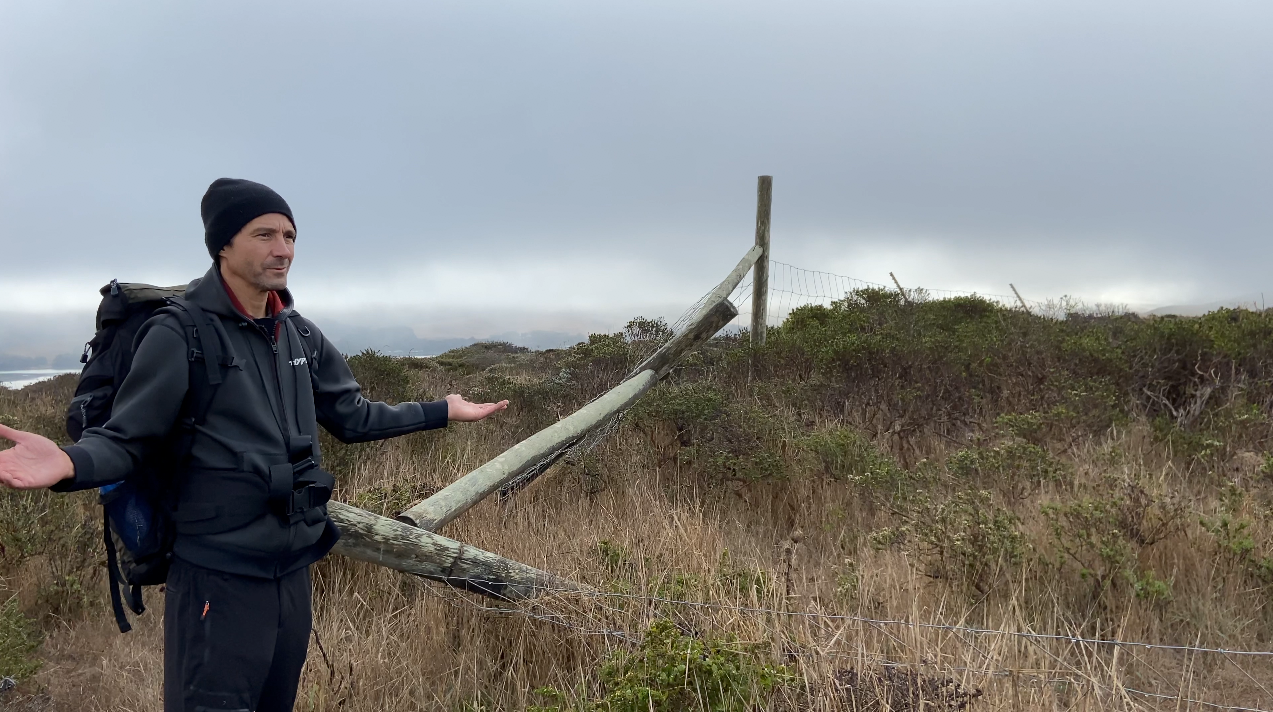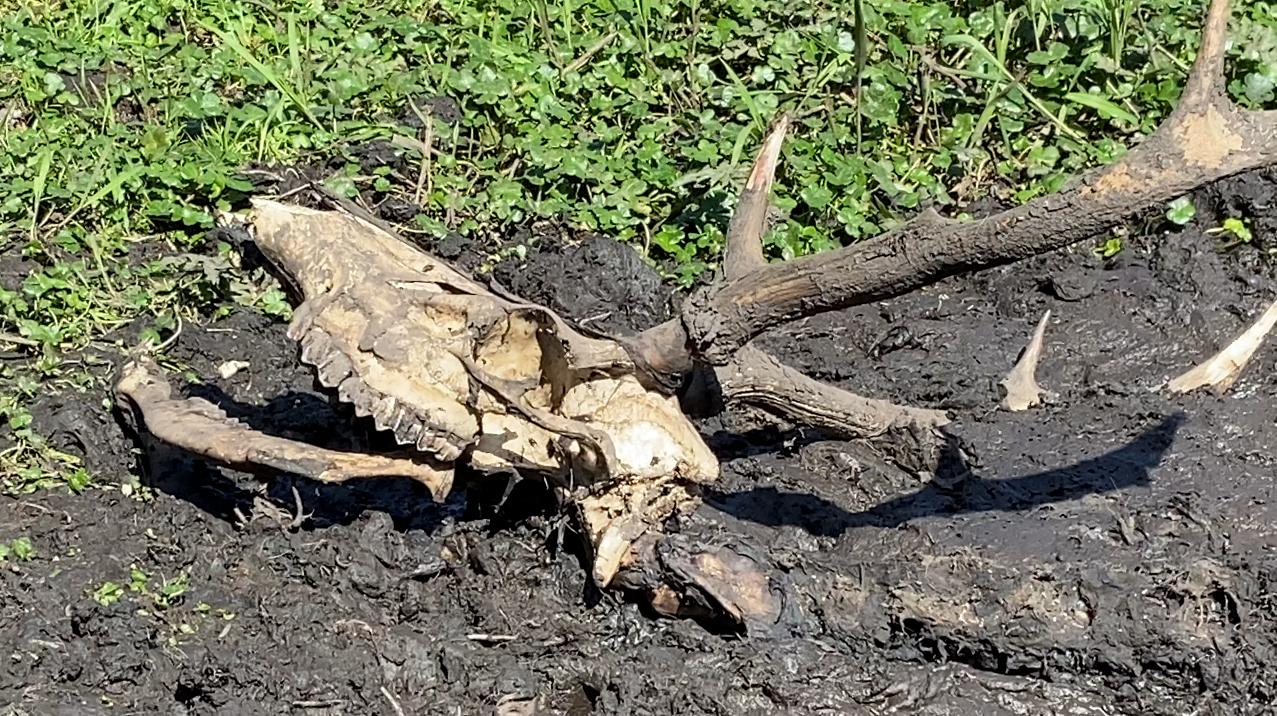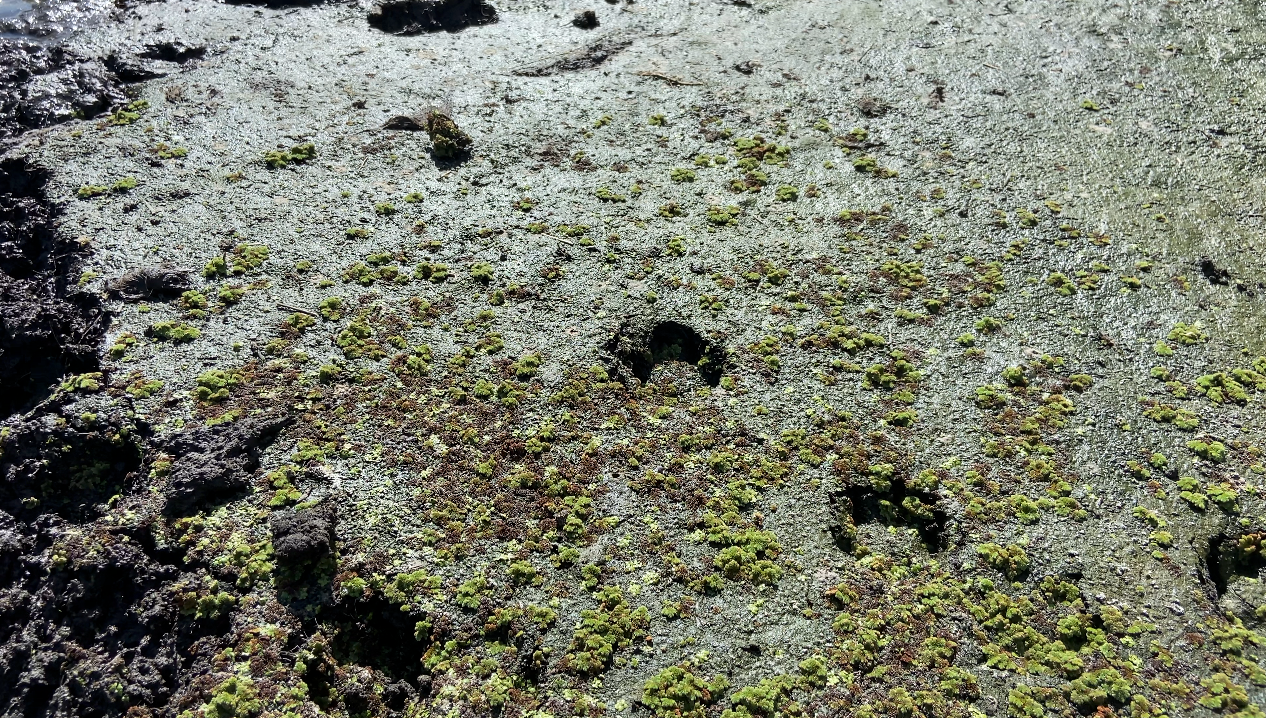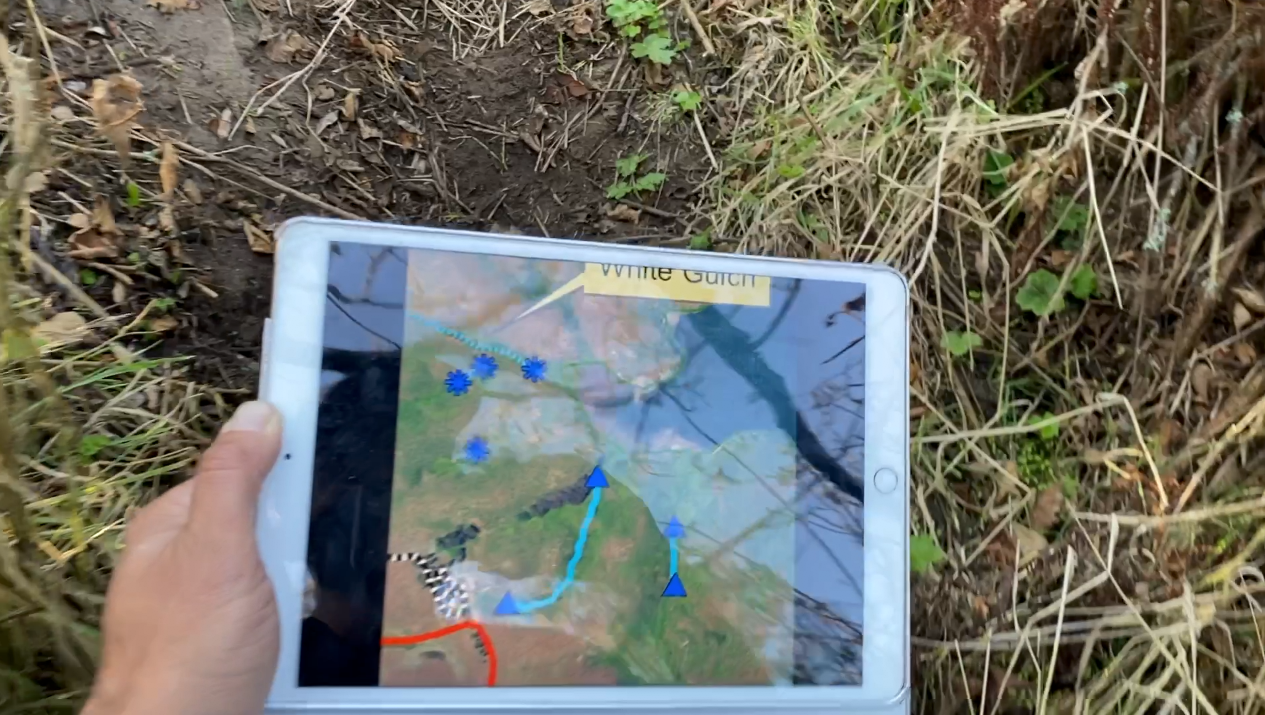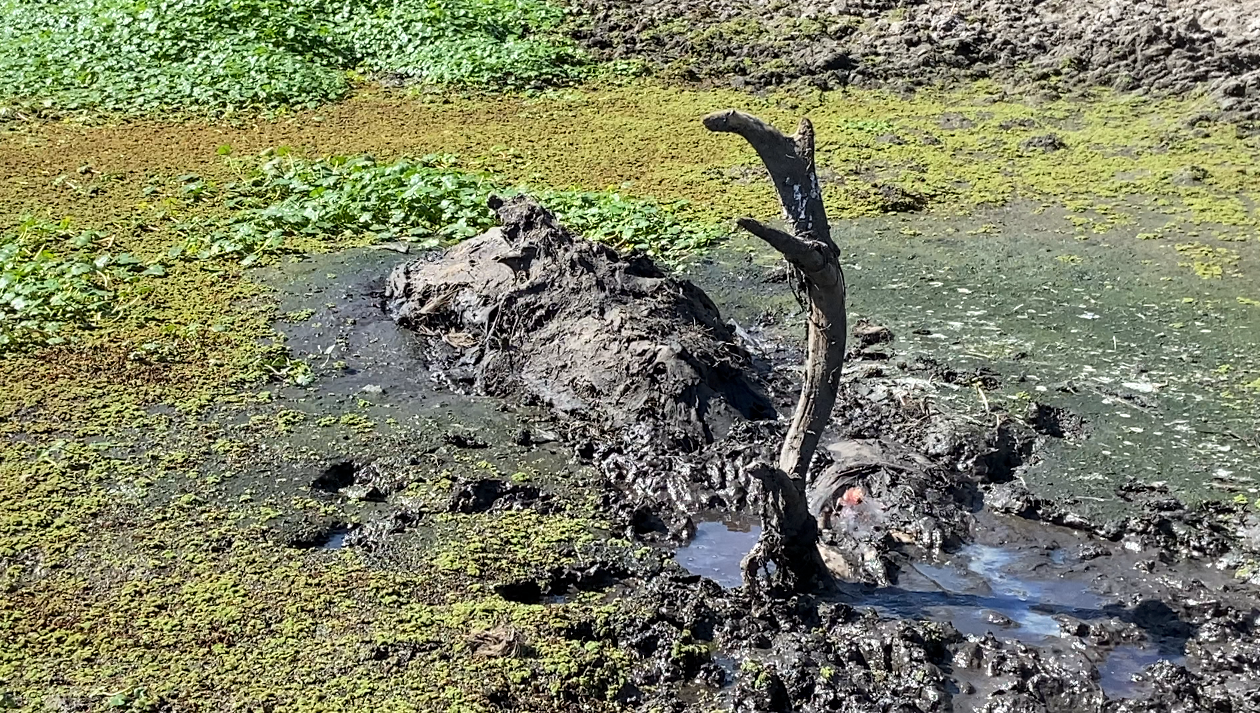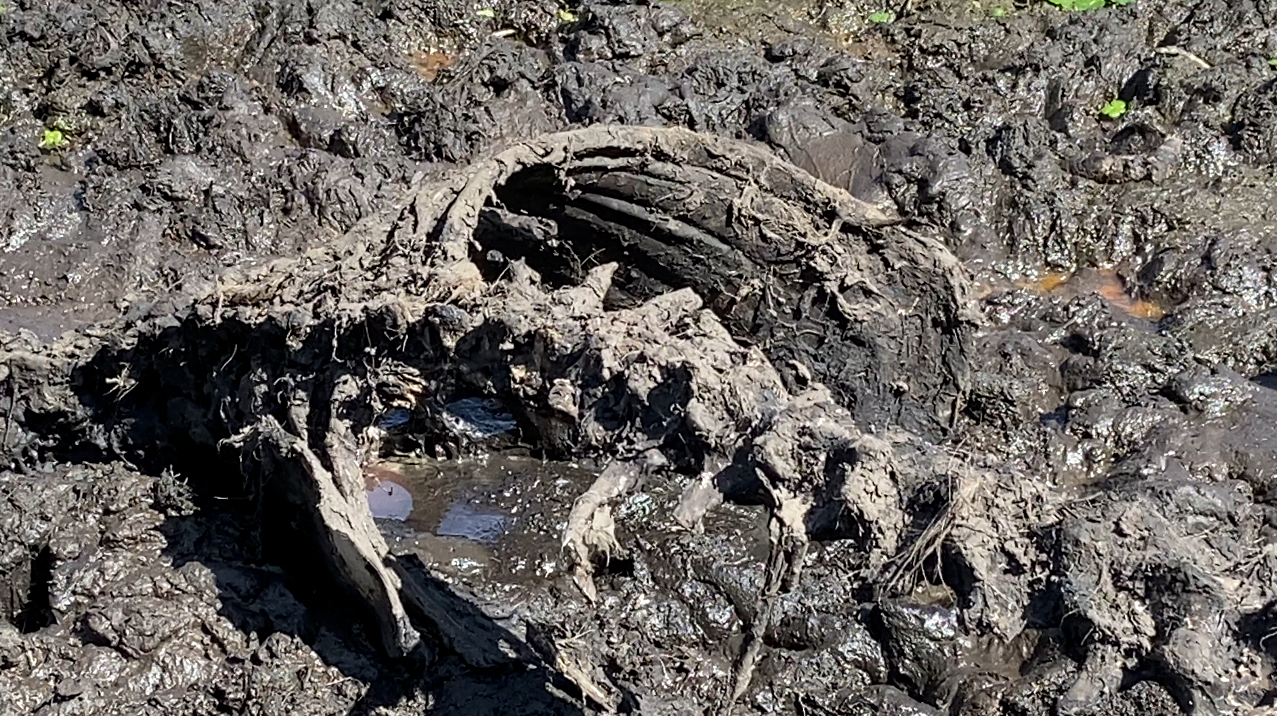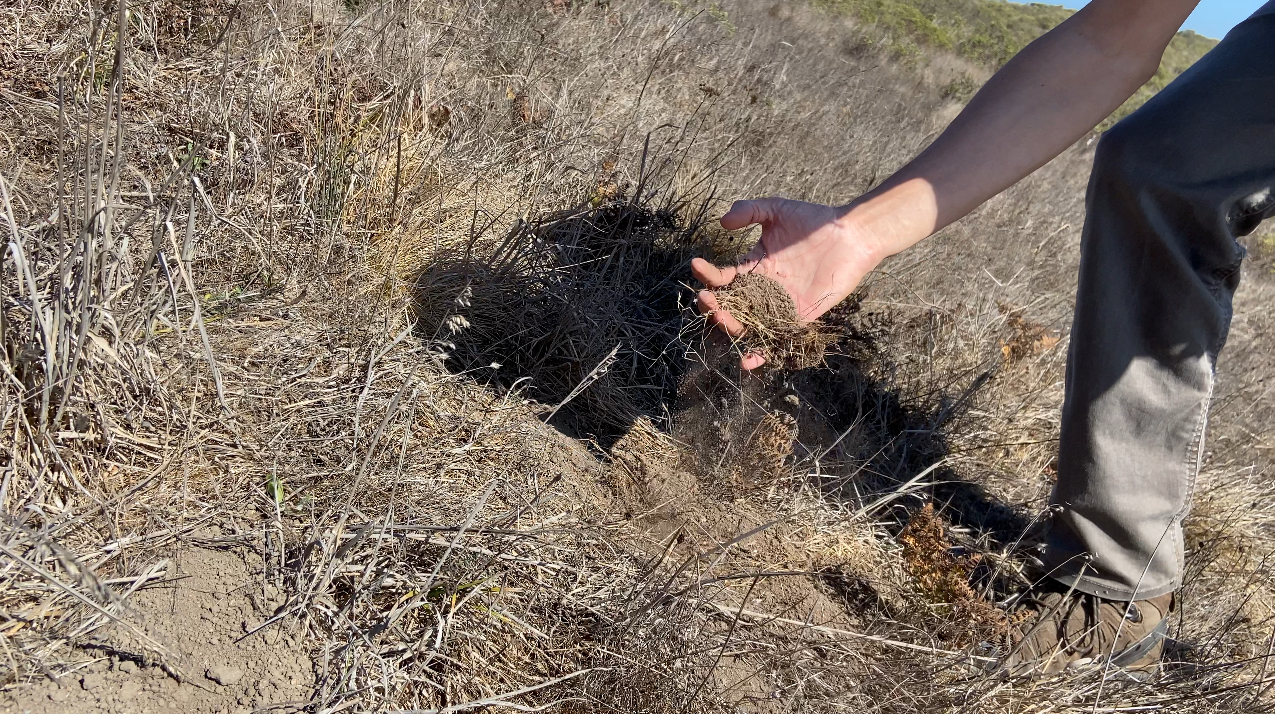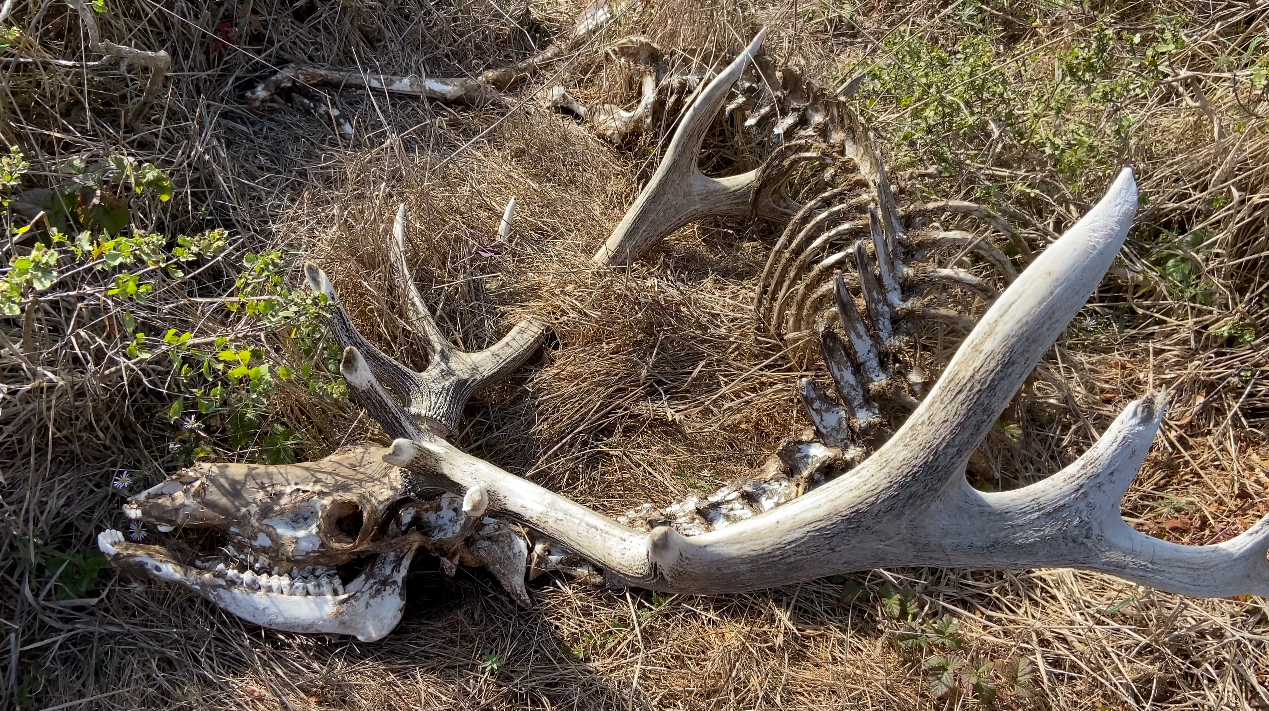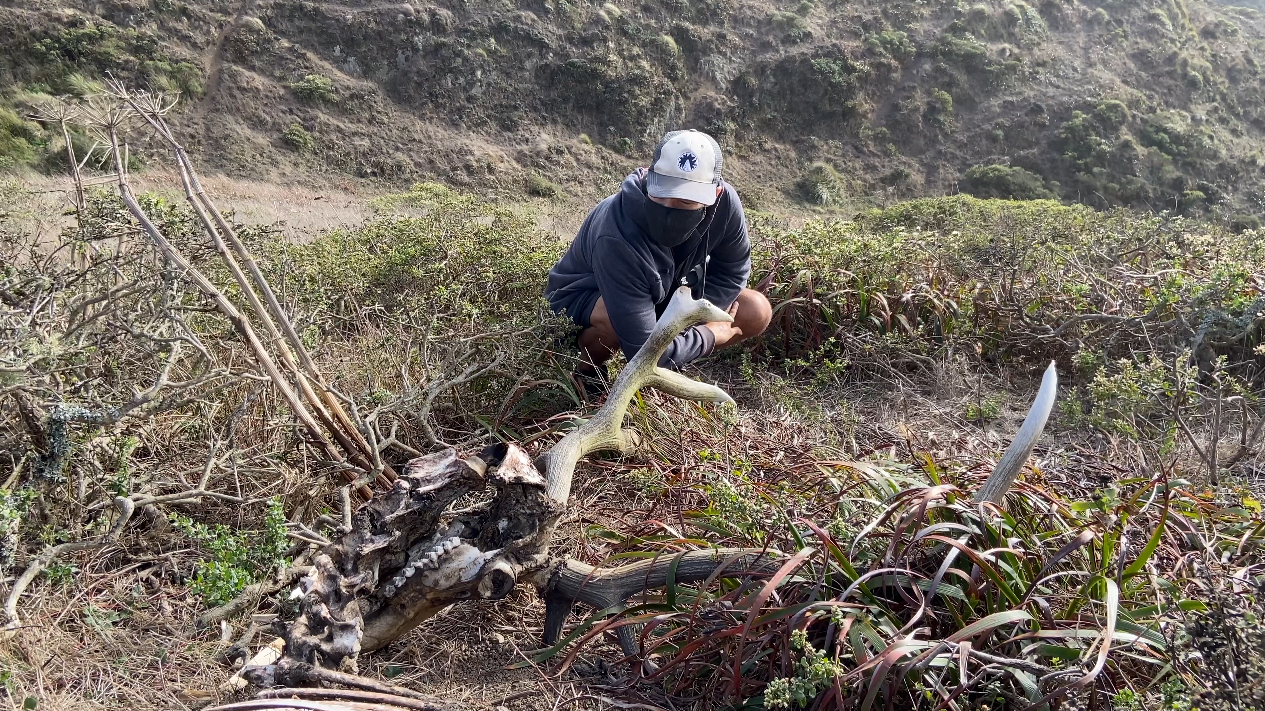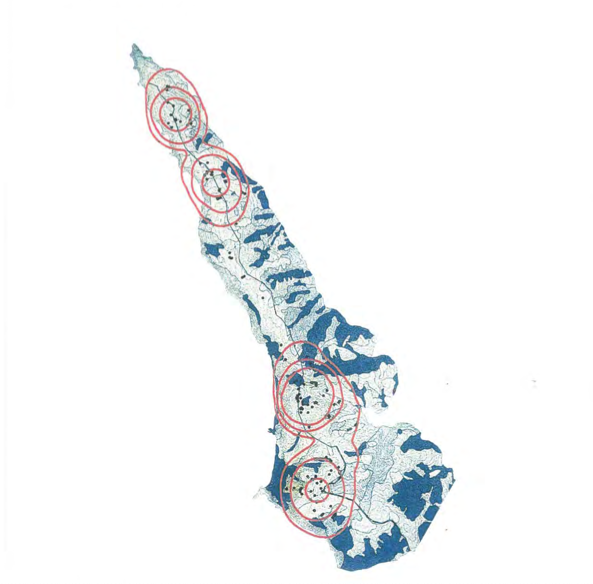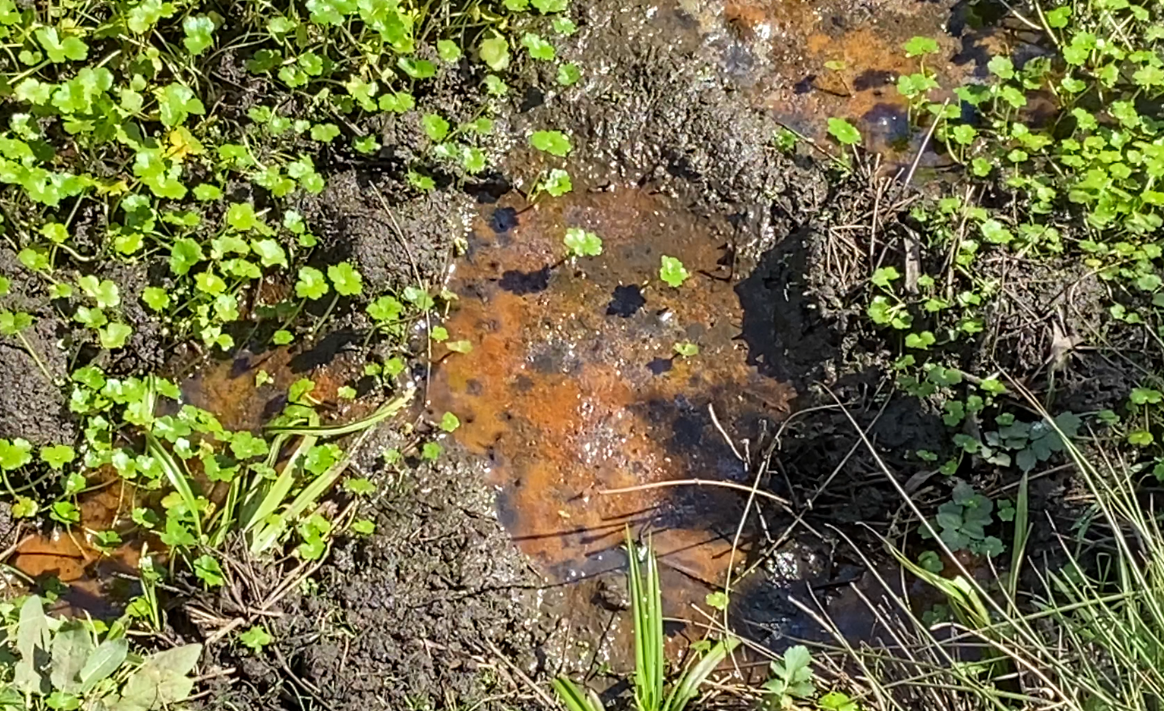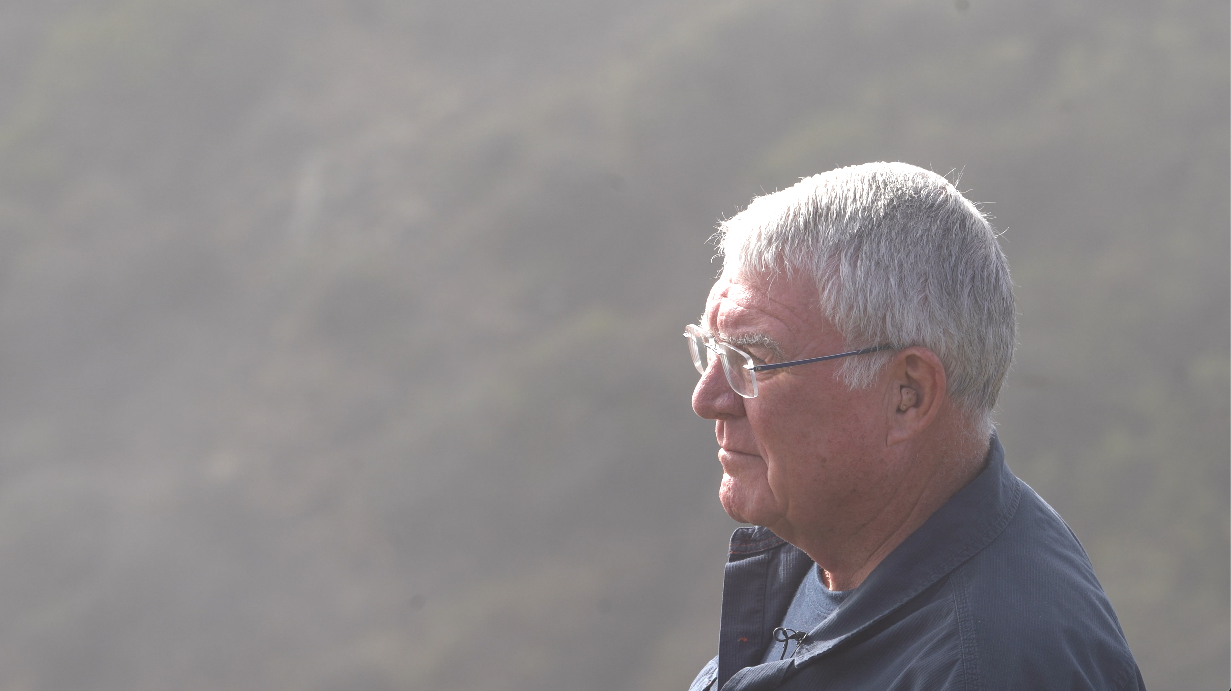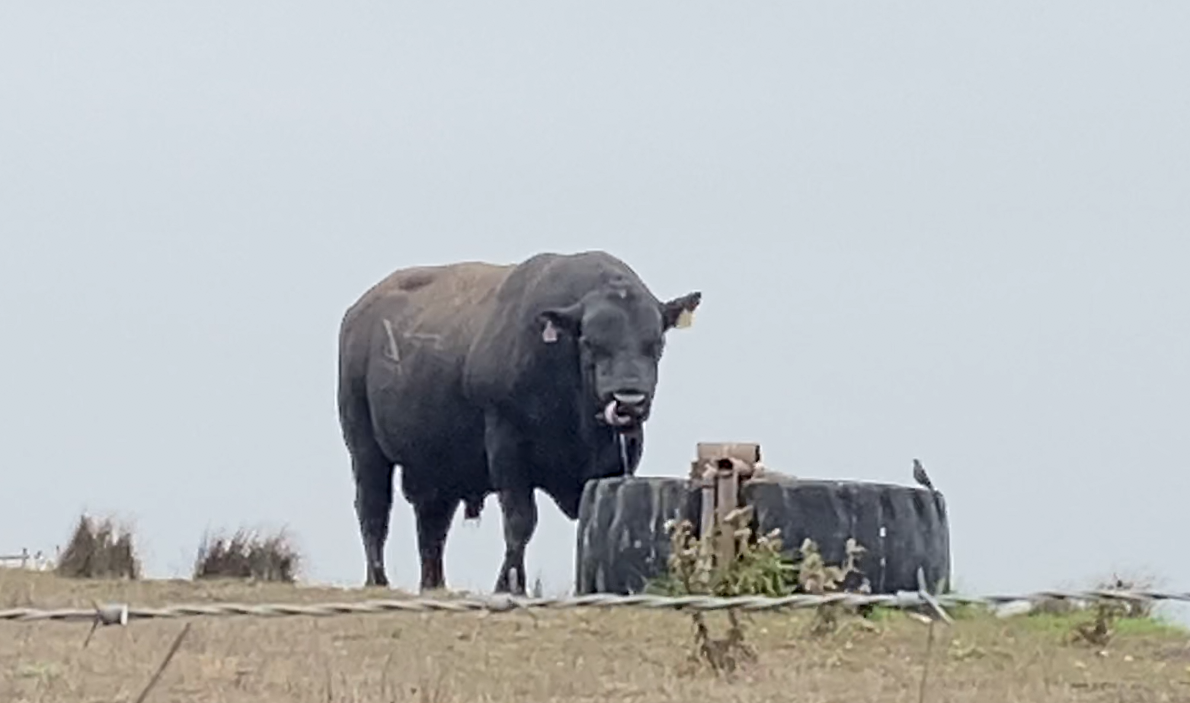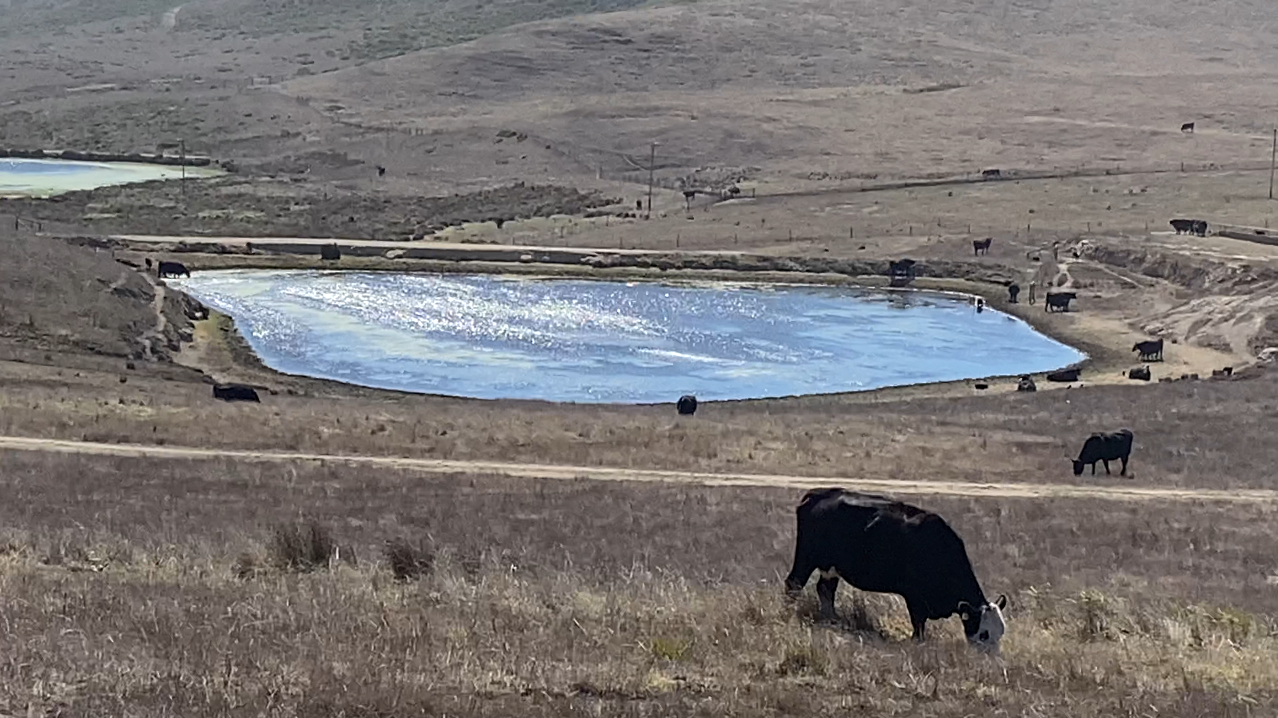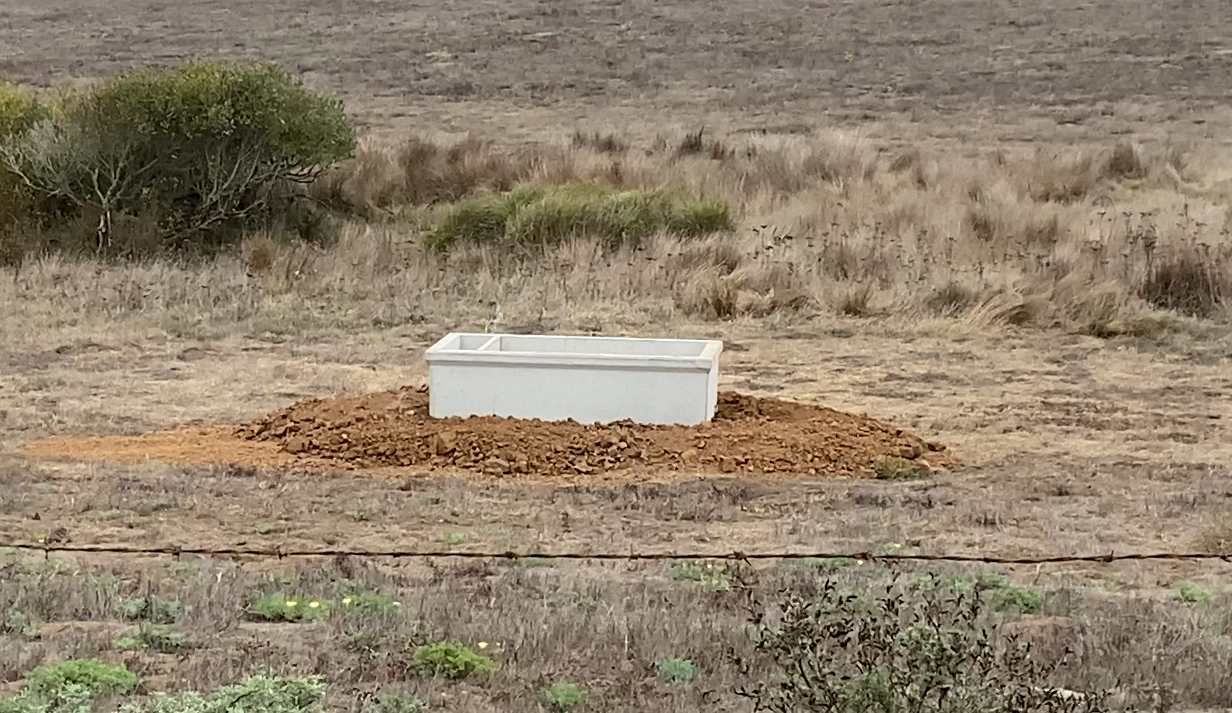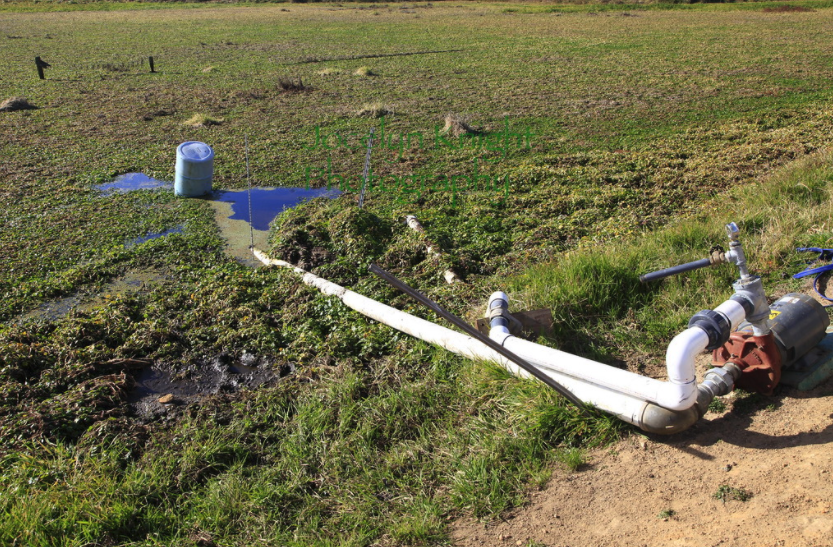|
Watch for the full breakdown. Read below for a summary
Park Service Delivers Water to Tomales Point: Morning Cup of Cow Shit
This episode walks you through everything wrong and contradictory with the park service's recent actions even when they seem to finally do something good. 1. The park service has argued against elk advocates that the elk don't need water, but are instead dying from a lack of quality forage / malnutrition. So if their goal is to help the elk why would they bring water, which they claim the elk ARE NOT lacking, rather than forage that they claim the elk ARE lacking? It's not that I don't want water there, but the park is contradicting itself. Do they really want to help the elk or is this nothing more than a gesture to try and get pressure off of them? 2. In the past, when the park service was pressured heavily to help the elk, the park service would claim they are looking into bringing in water (but never did). When they were pressured further they changed their excuse to stating the elk management plan prevents them from interfering with the elk die-offs. If the management plan truly bound their hands how is it that their hands aren't bound now? 3. The park service continues to lie and get away with it. For the third time the exact same map has been presented to the public as a supposedly "updated water map" based on recent monitoring of the water sources. Please tell me how a map that wasn't updated is also considered "updated". Please also tell me how each and every water source on the map is exactly the same as it was each time before. 4. It's disturbing to me that tourists hike out to Tomales Point, see the disgusting and almost dry pond at the very northern end and conclude this means the elk have water. You're simply not thinking this through, at least not from the perspective of a wild animal. They have home ranges for one. Tomales Point is fairly large, a disgusting mud puddle at one end isn't sufficient for every animal out there and even if it was sufficient is NOT USED by every animal out there. How do people conclude after 254 elk die followed by another 152 elk dying that there wasn't a problem just because they saw a pond on their one time trip to the park? #elk #tuleelk #pointreyes #pointreyesnationalseashore #tomalespoint
0 Comments
Perspective to set the tone: McClure's "downsized" dairy will still use up to 2 million gallons of water per year.
The Point Reyes Light misleads the public with a shocking amount of pro-ranching bias in their article about McClure Dairy. Let me walk you through the deception paragraph by paragraph.
The Point Reyes Light article is pasted below, paragraph by paragraph, colored in red, bolded and italicized, followed by my critiques in black.
Tomales Point rancher Bob McClure, the fourth generation on Point Reyes is shutting down his dairy this month. The spring that feeds the ranch is running dry, there is a glut in the organic milk market and he does not have a successor. He has moved to Petaluma, but plans to raise a small number of heifers on the land, which was one of six dairies in the park.
Bob McClure is closing his dairy operation in the Point Reyes National Seashore, putting an end to the largest and oldest dairy in the park and leaving the eight families who live on the land without housing or work.
The McClures have lived on the peninsula for four generations, longer than any ranching family on the point. But a number of factors—with drought at the top of the list—have pushed Mr. McClure to sell his herd of 650 cows and lay off his staff.
“I’m a dairyman to the core, but there’s another life out there—and I want to see it before I’m six feet under,” he told the Light this week.
The closure comes on the eve of the National Park Service amending the seashore’s general management plan to offer 20-year ranch leases, following six decades of short-term agreements. Mr. McClure said he plans to negotiate a lease to raise heifers in an operation that would be far smaller and gentler on the land. For now, he is keeping 150 young cows to graze.
The McClure Dairy takes center stage in this horrifying video of Point Reyes
Mr. McClure is 60 and none of his three daughters want to take on the business after him. He has had four eye surgeries that left him vulnerable to the wind and sun. He wants to travel and spend more time with his wife, Ruth, on their small ranch in Petaluma, where she works. But although these personal factors underlie his decision, he said the main reason for shutting down was the fear of running out of water.
The drought in Marin is the worst since 1977, and it has the potential to become the worst ever. Already, farmers are scaling back their crops or skipping the season altogether, and ranchers are making plans to truck in water and upgrade their collection systems. Only 15 inches of rain have fallen in Inverness this winter, the driest year on record. The winter before was not much better, with 23 inches of rain, compared to an average of 37.5 inches.
The McClure ranch relies on a single spring that is historically abundant but is no longer recharging. At this time of year, the water typically overflows into Abbotts Lagoon, but water levels are instead falling—and at least five months without significant rainfall lie ahead.
Mr. McClure shares a pond with the neighboring Kehoe dairy as a backup, but if and when that source were to run dry, both dairies would have to either move their herds or truck in water, an expensive proposition. The McClure dairy uses an estimated 20,000 gallons of water each day, mostly for the cows to drink but also to wash manure out of the barn.
The lack of rain causes the grass to grow slower, so the dairy must purchase more feed to nourish the cows. Feed prices are rising because farmers are also facing water restrictions.
Beyond the drought, the economics of dairying are not as strong as they once were, Mr. McClure said. He sells his milk to Clover Sonoma, and the company sets his production limits and price per gallon. Values are down 30 percent from their peak due to a glut of organic milk producers, he said.
Last month, he sold 80 of his cows to an out-of-state buyer that he declined to name. The buyer was pleased, and he offered to purchase the rest of the herd. At a time when people are struggling to sell organic cows, Mr. McClure was enticed by the offer. He sat down with his family and they all encouraged him to sell. The first load went out on Tuesday and the rest will go over the next two weeks.
Mr. McClure said he may hire help after he transitions out of dairying, but once the lactating cows are gone, his business will have no income, he said. The consequences for the around 30 people who live on his ranch are enormous. The children attend local schools, and a few of the families have lived there for over 20 years. They have one month left of work and two months before they are expected to move out. No one knows what will come next.
“It’s like a really big bucket of cold water dumped on top of your head,” said Miguel Galarza, who has lived on the ranch with his wife and four kids for the last eight years.
Mr. McClure gathered his staff last week to break the news. He became emotional when he talked about that moment. “Super good guys,” he said. “Our success has always been from our employees.” Jesus Romo has been the dairy foreman for the last 22 years. He starts each day at 6 a.m., checking the cows and giving marching orders. He enjoys the job because the weather is pleasant, Mr. McClure is a cheerful boss and the housing is relatively nice. When he told his two daughters that they were moving, he said they started crying. “All of our lives were here,” he said. “This is part of my family.” He said he has no choice but to move on and look for work at another dairy. “I don’t know how to do anything else but taking care of cows—cows are my life,” he said. “It’s sad to move and do it somewhere else, but we have to keep going.” The displacement of families exposes the intrinsic problem with tying housing to employment. The last time this many West Marin families were displaced at once was when Drakes Bay Oyster Company closed in 2014; at that time, 32 mostly Hispanic men and women lost their jobs, and the 15 families who lived onsite had to move. The housing market has only become tighter and more expensive since then. “Trying to find homes for eight families right now when there are very little vacancies, and the urgency of having to find a home when you’re worried about public health, is very concerning,” said Leelee Thomas, a planning manager for Marin County. Rosa Rodriguez moved to Point Reyes two years ago from the Central Valley after her husband lost his job at another dairy. Her two older sons attend Tomales High, and the youngest goes to West Marin School. She appreciated being in an unpopulated area during the pandemic and is hoping the family can find another dairy close by, where her husband can keep milking cows and her children can stay in class. “It could destroy our education. It’s very hard for someone to focus when a lot of things are happening,” she said. “We don’t have a lot of options. There aren’t a lot of jobs, or places to live.”
The future of the McClure ranch will depend on an upcoming appraisal and the park’s lease terms. The National Park Service will officially update its management plan by July, after which appraisers will determine a fair market rent for each ranch. Rental rates will account for activities occurring on the ranch, so Mr. McClure will likely pay less for a downsized operation.
“We look forward to working with the McClures to identify a transition approach on I Ranch consistent with the General Management Plan amendment,” outreach coordinator Melanie Gunn wrote in an email. If Mr. McClure does not sign a lease, the park service would be guided by the succession policy outlined in the amendment. The policy says that if a rancher does not wish to enter into a new lease, the park would consider proposals from other leaseholders or ranch workers within the park. If none of them are interested in operating a ranch, then the park would pursue a public process to identify an appropriate future use of the land.
In recent years, the McClure ranch has become a target of anti-ranching and pro-elk activists; last fall, over 200 people staged a protest on the driveway. Mr. McClure didn’t have much to say on the matter; his dairy is not in the range of any elk herds. During the protest, he greeted them and observed.
Activist groups contracted water tests near his ranch this winter, and the tests showed bacteria levels that greatly exceeded recreational standards. But it was just two days of testing after rain, and credible water monitoring requires multiple tests over time to paint an accurate picture. No regular water monitoring has been conducted in the area since 2013, though the regional water board requires dairies to maintain records on manure application and storage, pasture and riparian conditions and more.
Mr. McClure said he complies with all of the rules. The cows go in the loafing barn during the winter to prevent manure from washing away, and the creek areas are fenced off, he said.
In his 38-year tenure, he remodeled the milking operation to make it more efficient and brought in new technology, like a no-till seed drill and automatic scrapers in the barns. Many of the improvements have been made to help conserve the environment, he said.
Even with the upgrades, the ranch retains its layout from the 1800s. Nine features predating 1925 are listed on the National Register of Historic Places, including the large hay barn built in the 1880s. From James to Jim to Ron and now Bob, the McClures have been milking cows on Point Reyes since 1889, when products traveled by schooner to San Francisco. James McClure bought his first dairy in 1906 and the family moved around to several ranches before leasing the I Ranch in 1930.
#mcclure #bobmcclure #mcclureranch #ranch #dairyranch #dairy #dairydamage #drought #iranch #pointreyes #pointreyesnationalseashore #pointreyesllight #manure #shameofpointreyes
Leases and Permits
Water Quality Control Board document
Link to An Administrative History of Point Reyes
https://www.nps.gov/parkhistory/online_books/pore/admin.pdf
Link to Ranching on the Point Reyes Peninsula
https://www.nps.gov/parkhistory/online_books/pore/ranching.pdf Here's a paragraph from the Press Democrat, June 9, 2021. "Dairy farms in western Sonoma that rely on surface water are also quickly running low. Since each dairy cow drinks 30 to 40 gallons of water a day, larger dairies whose ponds have almost dried up are trucking in 35,000 to 40,000 gallons of water A DAY from local water haulers, Tesconi said. Water truckers haul recycled municipal water provided by Sonoma County." It is concerning that in 2021 we are still a population that can read blaring evidence of exactly why we have no water and who is draining us dry, yet react by saying, "How can we help them use up whatever water is left?" The most unsustainable form of "food" production that exists, dairy, is also an industry experiencing a glut. Meaning we already have more than can be sold. Here's a quote from the New York Times. "The amount of waste is staggering. The nation’s largest dairy cooperative, Dairy Farmers of America, estimates that farmers are dumping as many as 3.7 million gallons of milk each day. And the only reason the portion of product that is being sold can be sold at the price it is sold is because we the taxpayers subsidize this industry with billions of dollars every year. We don't need it. We have too much. It drains the economy. It drains our rivers, lakes, and aquifers. Turns out it's not even healthy. Yet all we can say is, "Let's keep this going no matter what it takes." Recycled or not, all this water comes from somewhere. "Somewhere" is a real place that we conveniently keep as an abstract concept, but in reality means where that water is naturally meant to be, but is no longer there. In turn that means every living creature that needed that water no longer has it.
That means dead plants, dead animals, and topsoil that is ready to blow away in the wind because no organic matter has survived to hold it in place. #dairy #drought #dairyequalsdrought #sonoma #pressdemocrat #pointreyes Are we so incapable of change that we are willing to burn money for the sake of continuing to burn money just because there is a long tradition of burning money? Taxpayers will fit the bill for a $400,000 plan to save businesses that already, by their very existence, are a constant drain on the taxpayers (as wells natural resources). This plan, which was approved quietly by the Sonoma County Board of Supervisors, will draw what little ground water is left in order to help dairies that are the reason the water is used up in the first place. If we've learned anything from the Marin County Board of Supervisors, this board consists of ranchers. Do people not understand that the only reason these dying businesses are even still in business because we have propped them up for so long at the expense of our tax dollars and the environment? How long can we keep cheering for something so bad? Oh, right, I know... "The backbone of America, right?" "Working people." "Sustainable." "Family". "Historic." "Cultural". Good lord! Wake up and grow up! You should be embarrassed that this propaganda has had such a successful effect on your ability to think clearly. Are welfare ranchers that have leeched taxpayers for generations really what we are calling the backbone of America and a "proud tradition that must be saved"!? I often wonder what year people will finally wake up; overcome their indoctrination and rise above that unspoken fear that tells all of us we can never ever criticize ranchers. Based on recent events It doesn't look like it is going to happen in my lifetime, which means we are all going to march to our doom like the destructively obedient robots that we have become. It's not just our doom. It such a highly anthropogenic society it seems that it doesn't even cross the minds of most people that water might be serving a purpose for other creatures before we steal it for our own purposes. We've taken so much water that now even dormant wells are being tapped. We are literally leaving nothing for nature while somehow being amazed that the land is primed for wild fires and wildlife is no where to be found.. The most inefficient form of food production one could dream up, the diary industry; producing "food" that people are finally realizing is detrimental to our health not to mention the health of the planet. "Food" that at its core is based in the misery of the animals required in the production process. "Food" that has required so much water over the years that the rest of the land has been reduced to a death zone of dirt and invasive weeds where once flowing river systems provided for incredible biodiversity. Damns, aqueducts, and irrigation instead steal that water to be channeled to dairies, which in turn use all that water for the incredible thirst of cattle as well as the crops required to feed the cattle. "Food" that leads to e-coli contamination in surrounding bodies of water. "Food that demanded so much water that we turned to aquifers...and now those are gone too. "Food" that demands the destruction of native habitat and the shooting of native animals. Why is it our responsibility to fit the bill to ensure that failed business models continue to limp into the future? Why is it that when we face crisis level drought the priority is to save businesses that demand the most of what we are in short supply of? Do we all have a death wish? How many businesses can you say that for? Think about it. Can you imagine filling out a financial assistance application for your own business, but replacing your business information with that from the dairy industry? 1. My business products are dumped every year in the millions of gallons rather than positively stimulating the market. 2. My business products require government bailout every year in order to keep producing the products that will again be dumped. 3. My products require billions in marketing campaigns (funded by FDA) just to keep people purchasing the undesired products. 4. My products require more water in the production process than any other product on the market, but I would like even more in the middle of a drought in a fire-plagued state. 5. My product production requires a shocking amount of land for minimal output. Please give me multi-million dollar easements in order to keep doing what I'm doing on that land. 6. Please keep devoting resources to Wildlife Services, a subdivision of the Department of Agriculture, to kill millions of native animals on my behalf every year, because I don't want them on my land. 7. Please force taxpayers to fit the bill for multimillion dollar methane digesters to help combat one of the many problems my businesses poses to the environment. 8. My products cost millions of dollars in medical expenses every year, but we know that's part of the plan in this country, so please help me keep sending people to the pharmacy and the hospital. 9. My business it the biggest driver of soil erosion, water eutrophication, habitat loss and species extinction. Just putting that in there for bonus points. Next time you start to blindly defend dairy ranching based on little more than phrases such as "historic, cultural, and multigenerational" think about whether or not your financial assistance application would be approved just because you waived a few magic words in front of a completely flawed business model that is killing the economy, the planet, and thus the people as well. The only way to save ourselves is to get rid of the dairies. Oh my God, did I just say that!? I know, I know, I just stated the unspeakable. What a terrible person I am. OK, well, go ahead then, condemn me and keep your heads in the sand because reality is too uncomfortable for you to accept. #petaluma #marin #sonoma #dairy #bailouts #subsidies #drought #water #wells #ranchers #sustainability #taxdollars #pointreyes
The superintendent was brought in specifically to kill native wildlife and promote ranching in the seashore.
Dave Press is an incompetent ecologist who spends most of his time tending to rancher affairs. Melanie Gunn is the outreach coordinator far too comfortable telling lies to the public with out shame while defending the violations of the ranchers with every other breath she takes. Nothing will change in Point Reyes until we the people force out the corruption. Let them know they are not welcome. Sign the petition here. https://www.change.org/pointreyes
Point Reyes National Seashore has been exposed for allowing water contamination to go on under their watch...AGAIN! Links provided below
​Click here to read the press release.
Click here to watch the short film. Click below to download the water study pdf
Shortly after Trump Appointee Kenkel’s arrival at Point Reyes National Seashore came an unprecedented move by any National Park Unit; blasting their email list with an attempt to defend themselves against the truth. It’s a strange and embarrassing thing for a park to do, but even worse is that it was done because they couldn’t actually defend themselves using the truth. If the truth was on their side the news publication would have been forced to retract its statements. So, like Trump, instead of dealing with facts, the park turned to propaganda. Now they are the ones who will have to retract their statements. Reality simply doesn’t seem to apply to this park service staff. Their own recently published EIS states that all new fencing and any replacement fencing will be wildlife friendly. Instead, one of the first moves by the park service was to install new, even taller, barbed wire fencing. As if that wasn’t bad enough last week new electric fencing was installed. Is electrocution friendly? Or maybe this is the park’s way of keeping visitors from walking onto pasture land even though visitors are allowed to do so. In fact, that’s one of the excuses used to justify the cut rate lease rates these welfare ranchers receive. The park has always snubbed environmental regulations so as to keep in good standing with the ranchers operating in the park. Kenkel, who comes from a farming background, seems poised to finish the plan of turning Point Reyes into one big ranch, wildlife and citizens be damned. The park he was plucked from promoted ranching and actively killed NATIVE wildlife, matching perfectly with the PRNS’s plan. It’s hard not to think back on Kevin Lunny, one of the worst lease violators in Point Reyes, meeting with Trump, the most environmentally unfriendly president ever, in the white house, mapping their vision for national parks when you see someone like Kenkel arrive. All images taken in Point Reyes National Seashore by Skyler Thomas I read two very different articles this week regarding grass fed beef; The first thoroughly debunked the glorification of “grass fed” as some sort of earth-friendly meat option . The other article discussed removing the cattle operations in Point Reyes. If you someone who currently enjoys eating meat and don’t want to give it up you’ll likely reject any data in article one regardless of merit, so let’s just skip to article two. A location meant to serve as the poster child of “grass fed”, Point Reyes National Seashore instead provides a focal point for everything wrong with animal agriculture, even when it is "small, local, and organic". The damage, which is both scientifically and visually undeniable, has led to increasing public scrutiny as to why ranchers, paid millions for their land, continue to receive new leases within this national seashore. A few reader comments below the article expressed concern for where these grass fed operations would move to if they didn’t operate in the seashore. To me, this indicates that those with this concern are picturing the grass fed operations in Point Reyes as something they are not. Look closely at the ground these cattle are "grazing" on Erase the fantasy of cattle getting fat on grass and wildflowers. The bulk of the year the pastoral zone looks like brown, hammered shit, sometimes even resembling a demilitarized zone. The remaining portion of the year it improves to green, hammered shit. That last, and shortest portion of the year is the one from which the fantasy must be derived. Non-native, annual grasses are reseeded, plastered with manure, and grown briefly before the cattle hammer it back down to nothing. Sure, the cattle may roam the land, but much of that time they are walking on bare soil, manure, and a few species of noxious weeds that even the cattle don’t want. In these months the cattle are mostly fed at concentrated feeding areas with supplemental feed. This is the reality of ranching. This is the effect ranching has on native vegetation. This is the effect ranching has on habitat. This is why the cattle are often found outside their legal grazing boundaries, destroying what little native vegetation remains and polluting the water channels. There are several lessons here:
Additional considerations: What did it take to turn a perennial grassland into dirt as seen under the hooves of the cattle in these photos? Fertile soil and native vegetation reduced to sand!! The answer is generations of ranching and mismanagement. One might be tempted to blame the degradation on the high numbers of cattle in enclosed areas, which would be partially true, but keep in mind that these ranches are supposedly small operations. By that argument animal units at other operations only increase from here. Furthermore, the Tule elk are held in a reserve that is known to reach its carry capacity regularly, yet this area of the seashore looks like the garden of eden in comparison to ranch lands. If you want to blame the condition of the pastures on enclosure then how do you explain the far superior habitat of the elk reserve? One would expect animals that reached the carry capacity of their habitat to decimate the land and eat everything in sight in their struggle to survive. The elk reserve once again provided proof that native ungulates are vastly different than introduced livestock.
Last week Point Reyes National Seashore used its email subscription list to send out a feeble and embarrassing attempt to defend themselves from the growing exposure of mismanaging the park. For this blog I'm only only going to focus on one of those points of contention because there is simply too much to cover (stay tuned for the rest). Point 4 in the email contested that the park service never admitted to hundreds of elk perishing of thirst during a major drought.
It's true. The Park Service did not directly say that the elk died of thirst. Instead they provided a strange and confusing combination of quotes that said just about everything except the exact words, “the elk died of thirst.†Here are a few example quotes from 2015 articles regarding the last die-off.
"We observed the ponds had gone dry. We are looking into options for carting water in, making sure there is water out there."
"It's reasonable to conclude that the drought conditions, the lack of water, the lack of available forage played a role in the the decline." "There were no outward signs that something significant was happening that needed to be jumped on." "The decline was drought related but the mechanism is not known."
Well, that is about as clear as the mud the elk were left trying to drink from. But hey, they are right, they did not ever actually say the elk died of thirst. Well done, park service!
While the park service plays games of exact wording what the public should be aware of is that while they may not have said certain words they repeatedly admitted to knowingly allowing wildlife to die while doing nothing about it. Unfortunately, that continues today.
But while the park service hasn't change since the last die-off the public's awareness of the situation has. Previously, citizens and conservation groups who raised concern on this issue were pacified by the park by telling these people that the park was looking into a plan to bring in water. For example, the group WildCare, who at the time was very vocal about the issue, left the situation satisfied while offering this statement,
“The park intends to provide supplemental water if needed. They are working on a plan. We are happy with that."
As we know now no action was taken and 50% of the herd perished. Those who are paying close attention also realize that nothing was ever going to happen. This time around people were paying more attention, myself included, and I began to see disturbing similarities between past and present. Many of the statements the Park Service was issuing over the summer and fall of 2020 seemed to be a regurgitation of the same statements as last time.
​ Before I reveal the upsetting details of present day, let's revisit details of the previous elk die off.
It should be noted that while the Park Service maintained that the elk in the reserve were not dying because of thirst during the drought the elk outside the reserve did not suffer a similar die-off. Nor did any of the cattle on the ranchers operating in the seashore (except, of course, the ones that were intentionally killed at slaughter or the baby male dairy calves that are disposed of shortly after birth).
Despite no animals dying outside the reserve during the drought this still leaves open the possibility that the elk in the reserve died of something other than thirst, such as malnutrition or some other deficiency due to being forced to live within a limited, enclosed area (Side note - poor forage quality is also a consequence of lack of water so really we are splitting hairs on that one). Still, to deny lack of water as a cause of death is awfully convenient considering the deaths happened when the water was all but gone and not at any other time. Consider the numbers; 254 elk died, approximately 50% of the total herd. That's not a gradual shift in population. That's an extreme drop off in a relatively short period of time. And yet the park service was quoted as saying there were no outward signs of a problem that needed to be addressed while simultaneously claiming they were watching the situation closely. I’m not sure it’s possible to monitor a situation closely while not noticing a 50% decline of an enclosed herd. It’s not like these animals are ranging over a massive territory that can’t be monitored, in fact that’s part of the problem, the area is too small. I’ll add that myself and others I've worked with on this project have NEVER run into or spotted a ranger or a docent a single time that I’ve been out monitoring the elk.
While citizens and park staff debated whether the elk had enough water it seemed that most people were missing the bigger picture. Whether the elk were dying of malnutrition, mineral deficiencies, lack of forage, lack of water, or any other reason, the bottom line was that they were dying and the park was busier making excuses than looking into what exactly was wrong or how to help.
But was there ANY scenario in which the park would help? On that note we must discuss the Tule elk management plan. If we go back to published statements made by the park service staff during the previous die-off in some interviews they stated that they were looking into options for bringing in water, but they also referenced the management plan, stating they were bound by the ‘hands-off’ policy of letting nature take its course. In other words, they would be interfering with natural processes if they helped the elk thus they were not allowed to help. So the reality is that the park service staff were never going to help the elk regardless of what evidence was provided. It didn’t matter if it was a copper deficiency, lack of forage, or lack of water, or whatever. The overarching policy was to not help the animals, so why the cat and mouse game? Why tell groups like Wildcard that they were looking into options for bringing in water? Fast forward to 2020, another record setting year of heat, drought conditions and fires. Animals across the state were suffering intensely, even the typically cool, foggy coast of Point Reyes couldn't escape the heat. When the ponds went dry and citizens began finding carcasses the public once again raised their concerns. And the Park Service once again pointed to any issue except the lack of water. ​
But alas, that’s not the point I wanted to make. My point is that if the elk management plan was preventing the park from helping the elk, then why the song and dance about what the actual cause of death was? Nature lovers were out chasing their tails trying to figure out how to convince the park service that the elk needed help when the reality is there was never any hope. Why not just say so? I even had a phone conversation with the park service about this; while we were discussing necropsy results, malnutrition, and other elk theories I said, "But if I understand correctly your elk management plan prevents you from helping the elk regardless, correct?" She said, "Exactly." So I said, "Why not cut to the chase and tell the public they have to deal with the fact that the park wasn't going to help so both parties could move on?" No answer. Well, I have my own theory. Saying, "It is our plan to allow the elk to die" doesn't exactly have a great PR ring to it, does it?
I guess that’s why we once again started hearing about contingency plans to bring in water. Contingency Plan?
The park was receiving so much pressure from the public that the park created a page on its website dedicated to this issue hoping to alleviate concerns about the lack of water. It included a FAQ and a map showing available water sources within the elk reserve. Missing from that page or anywhere else on the website was a contingency plan.
During the same phone call mentioned above, the outreach coordinator for PRNS again stated that a contingency plan was in place. So I asked to see a copy of it at which point she changed her statement from the plan “being in place†to “working on a planâ€. Hmmm. That's interesting. Being in place and being in the works aren’t the same, They aren’t even similar. And I have, in writing, multiple email conversations the park service had with members of the public telling these people that a plan was already in place. Not being worked on, but already in place. Some of these conversations took place months before my phone call in which it was admitted the plan did not yet actually exist.
What do you call that if not public deception? Also, bear in mind that during the same conversation she had already agreed that no contingency plan (even if it did exist) would be acted on due to the constraints of the elk management plan.
Shortly after this the Park Service updated their water sources page to include a sentence regarding a contingency plan. That was the best we ever got. A one sentence plan. A sentence that came after the fact of being caught not having a plan. A plan stating the park would bring in water troughs IF they deemed it necessary. That’s not a plan, that’s a sentence. A very vague sentence. No science. No specifics as to what exactly determines necessity. Just more lip service. Recall that a supposed contingency plan had been mentioned in interviews from 2015 so the deception of using a non existent plan goes back several years. Science?
Speaking of science, there are some major flaws with this management plan. It seems rather unfair to speak of allowing natural processes to take place while animals are unnaturally confined to a relatively small area. That’s like a zoo with a policy that when the zoo runs out of food to give the animals that it’s OK to let the prisoners starve to death.
The park has referred to the elk exceeding their carry capacity in the reserve as a justification for letting the elk die, but how many people are aware the Tule elk management plan was written with full knowledge that the elk would routinely reach this carry capacity and suffer die-offs? Morally, I find this upsetting. These aren’t animals that just magically disappear when carry capacity is reached, every one of them dies a slow, agonizing death. This isn’t a survival of the fittest scenario, this is a case where animals don’t even have a fighting chance to improve their situation but are instead doomed by human policy and a giant fence standing between themselves and hope. But morality aside, the management plan is badly flawed scientifically as well, perhaps spelling ultimate doom for this population thanks to human-caused genetic bottlenecking. Let’s look at the Tule elk timeline.
The hands-off policy may sound like a noble attempt to not interfere with nature to some, but contradicting this hands-off management policy I learned of a few examples of hands-on management. After interviewing Dr. Judd Howell, who worked on a study of these very elk for the park service, I learned that contraception was used as a way to keep this elk population down. That seems pretty hands on. In more recent history, the park published a statement that they attempted to rescue an elk from a mud hole in the reserve. That seems pretty hands on. By the way, “mud hole†is an actual quote. Those are the words used by the Park Service to describe a location that they also had referred to as an adequate water source. I didn’t even have to say this for them! Oops. This “mud holeâ€, as the park called it, is marked on the map with a big, blue, refreshing-looking dot. ​
Which brings us back to my effort to document these water sources. If the average person were to accept the map at face value, indeed it would appear that the reserve is full of plentiful water sources. That worked on quite a few people. Some even wrote to me asking me if I’d seen the water map since I was “so stupid as to claim there might not be adequate waterâ€. On the other hand the park service responded to some citizens who wrote in with concerns stating that the ponds shouldn’t be considered an indicator of water availability in the park. To that statement I present a question. If you include the stock ponds on a map titled ‘available water sources’ are you not indicating to whomever looks at that map that the ponds ARE water sources, especially when they are marked in blue?â€
Let me quickly tell you about some of those water sources, including seeps, springs, and ponds.. One of the first spots investigated was nothing but mud, algae, and elk corpses. Yes, a water source full of elk corpses. Another one makes as available was actually on the ranch side of the fence, of reach of the elk. The next spot was supposed to have flowing water, but instead we found a few puddles covered with some sort of orange film. And so it continued. Often we looked at each other wondering how desperate an animal would have to be to drink from water sources that were disgusting, yet the park service insisted the elk had “plenty of waterâ€. Those are the actual words used by the park service so let’s look at what “plenty†means. Dave Press stated that these were wild animals, adapted to the land that knew how to survive. That’s not the impression I got looking at two adult Tule elk rotting in a mud pit. Personally, I don’t think that’s the choice a “well-adapted wild animal would make if there was plenty of water available elsewhere. ​ Furthermore, this is the same mud pit the park service attempted to rescue yet another elk from after local wildlife photographer, Matthew Polvorosa Kline and I had documented the other two corpses. Imagine the desperation level of an animal that tries to reach the center of a mud pit that already has two of its own kind rotting in it in the hopes there might still be some sort of moisture.
As we continued to document the water situation one day Matthew and I just stood staring at yet another handful of tiny, disgusting mud puddles where water was supposed to be “flowing†We contemplated whether there was even enough water in all the puddles to fill a single bucket. “Who is this enough water for?â€, said Matt. The two of us were already struggling under the heat of the sun and sympathized with mammals much larger than ourselves that had to deal with these conditions around the clock rather than just for a few hours like ourselves. I don’t think there was enough water there for the two of us, much less hundreds of 500 pound elk. Of course if we were compelled to drink the water we would have gotten sick. This filth was something only an animal in dire need would drink from. What consequences came from drinking such foul water, even for wild animals? Certainly there had to be downsides of obtaining moisture this way rather than from a clean water source. The park service stated that a necropsy showed the elk they examined suffered from an unidentified systemic infection. Can a systemic infection not be water-borne? Isn't it highly likely? Was I over sympathizing with wildlife? Not according to Julie Phillips, a Tule elk biologist who tracked and studied these animals for 30 years. “In all that time I don’t recall seeing an elk ever drink from a mudâ€.
What does the park service have to say about this, they have some scientific basis to contend with scientists such as Judd and Julie, right? In fact it was Judd Howell who suggested that I ask where the peer-reviewed papers were. Where was the science to back up their statements? Where were the studies? Without any of this the park is simply stating opinions. So I asked… "Plenty of Water"
In my phone conversation with Melanie Gunn she criticized the citizens who attempted to bring in water for the elk saying, “You can’t just do that, there’s a lot of biology involved here.†I responded, “Speaking of biology, can you tell me about some of the studies the park has conducted on this topic since the last drought? Or any current and ongoing studies of the elk?†She conceded she wasn’t aware of any.
​ Nevertheless the park is comfortable telling the public the elk have "plenty of water". So via email I asked, “How much water does an adult Tule elk require?†They didn’t have an answer. ​ Let that sink in. This is the only National Park with Tule elk. These people have a rare, endemic species at their fingertips. If anyone should be an authority on this topic it should be the park service. But no. No data. Not even following the previous disastrous drought. At that time Dave Press had been quoted that the die-off was a good research opportunity and that they would have their ears to the ground more now. Instead, nothing. I would think one would have to know what plenty of water actually means before confidently telling the public there was plenty of water. But cattle, that’s a different story. We certainly know how much water they need, don’t we? 30 gallons a day! Some estimates say up to 50 gallons a day in high heat conditions. So during this heat wave, while Tule elk died trying to find water in mud pits, on the other side of the fence the cattle were enjoying access to multiple ponds, all still full of water, the smallest of which was much larger than the only remaining, disgusting pond in the entire elk reserve. But not only that, troughs and other watering stations could be seen scattered across all the pastures, providing the cattle access to even more water. Adding insult to injury the park even allowed the ranchers to begin pumping water out of natural water sources such as Kehoe Creek and Abbott’s Lagoon. It was unbelievable to witness a park callously claim that the wildlife had plenty yet conditions were extreme enough that the ranchers were allowed to take even more water from that habitat for themselves.
I guess the park didn’t have time to study the elk while they were busy writing permits that tried to give scientific backing to claims that adding another poop holding pond to a ranch wouldn’t negatively affect the environment. ​
Take a closer look at the water map lies here
A Few Last Details...
I feel I would be remiss not to mention a few more things. A citizen shared an ongoing conversation with the park’s outreach coordinator, Melanie Gunn. The citizen had been watching my videos about the elk and wasn’t convinced by park’s assurance that the elk had water. Eventually Melanie told the citizen that park staff had just been out monitoring the water locations and had updated the water map accordingly. Except there was no new water map. The citizen tried to explain that it was the old map, but Melanie argued it wasn’t, going so far as to say, “Staff were in the field last week confirming these water sources and the map was updated accordingly.†That’s pretty specific, to attach the action of updating a map along with the event of staff being in the field confirming the water sources. The reality was the map hadn’t been updated and it wasn’t until the citizen said to provide a copy of the new map along with the old one that Melanie conceded it was the same map. Sure, that could be chalked up to just a mistake, but it was a pretty specific statement. If the citizen hadn’t known better wouldn’t this have been just another example of pacifying the public.
Then there were the necropsies...or maybe there weren’t. In September ABC Channel 7 was in the park investigating the Tule elk story when park ranger Christine Beekman stated that two necropsies had been performed showing that the elk had died of malnutrition, not dehydration. She also told this to Lisa Levinson of In Defense of Animals. However, when Dawn Rogers of Ranch Compassion asked for the necropsy results Dave Press told her that no necropsies had been done and that they don’t generally do necropsies. Yet on the phone Melanie told me about another elk found later in September that they did perform a necropsy on with the help of California Fish and Wildlife. She went on to tell me they perform a necropsy every chance they get, but it’s difficult to get to the body in time. By my count there is one necropsy, the one Melanie told me about on the phone. The conclusion was that the elk suffered from malnutrition. What do you know?! The result was the same as the result that had been given for the other necropsies...you know, the ones that didn’t exist. Further complicating the necropsy issue is another email exchange with a citizen asking about the necropsies. The request begins in November to which Melanie replies they are working on getting the information. Come December the citizen asks again and Melanie delays again, but she refers to the multiple necropsies. To date the citizen has not received the requested information, but I am left with new questions. How many necroposies were there total. And how did the park make a publicly declared determination of malnutrition if they are still gathering the information?
I suppose you could chalk all this up to mistakes...again.. Very, specific mistakes that sure seem to happen a lot with this park service.
#pointreyes #pointreyesnationalseashore #tuleelk #deception #droght #thirst
Two things happened around the same time a few months ago; Melanie Gunn stated that they would kill the elk no matter what and Craig Kenkel was named as the new Point Reyes Superintendent. Kenkel comes from a park that promotes farming while actively killing native wildlife, both within the park’s boundaries. Point Reyes promotes ranching and seeks to kill native wildlife. Seems like a perfect fit to carry out their pro-ranching, anti-wildlife agenda. So back to Gunn, who makes a living defending ranching in the seashore. In a phone call she stated that even if the elk fence came down and even if the ranchers were gone they would have to kill the elk anyway because they couldn’t be allowed to populate to such an extent that they might expand beyond the seashore’s boundaries. Why? Because there was nothing to control their population. Personally, I already find it sad, disturbing even, that our park service would argue to prevent life for fear of life actually succeeding someday. Maybe one day years from now, in the fantasy situation of new ranchers being in the seashore, the elk population might get large enough that a solution needs to be found...well, wouldn’t it be nice if we had a park staff that spent those years seeking a solution rather than adopting a policy of killing wildlife now so we don’t even have to think about future management? This leads to the other issue I have with what she said, and by the way, if you are having a hard time believing she said what she said (as I did often times during the phone call) she repeated it in an email, so it's in writing as well. Anyway, her justification of not letting the elk population go unculled is because there’s nothing to manage their populations if that happened. Mind you, this is in a seashore that tolerates around 5,000 massive cattle, but let’s be sure not to see what happens with 5,000 elk. Well, there will never be a shortage of humans chomping at the bit for an excuse to kill animals so of course, there would be an option, in fact the Tule elk populations outside the seashore are hunted now. Yes. But what this is really referring to is the lack of native predators to naturally manage the elk population. Now, why do you think we have a shortage of native predators. The answer is in two parts, with one underlying theme; animal agriculture. There is the killing of wildlife by ranchers themselves and there’s killing of wildlife by Wildlife Services, a government organization under the department of agriculture that kills millions of wild animals every year, mostly for the sake of agriculture. Now remind me, who is calling for elk to be killed in the seashore? The ranchers. Why can’t elk live outside the seashore? Ranchers. Enter the new superintendent Craig Kenkel, who comes from a park in Iowa that was actively killing native deer with the help of none other than the aforementioned Wildlife Services while simultaneously promoting farming, both within the park’s boundaries. Hmmm, Point Reyes is promoting ranching and proposing to kill wildlife and their new superintendent comes from a place that promotes farming and kills wildlife. What a convenient fit. Note, these were native deer, not invasive deer. I’m sure there are many of you obediently repeating the popular excuse of “The population needed to be controlled,” or “they were pests”, but again, this is happening in a place that simultaneously promoted livestock in the same park. Again, we have a situation where a national park isn’t pursuing the reintroduction of threatened species of native predator that desperately needs habitat, nooo we’re just gonna shoot the deer ourselves and promote agriculture in a park. 4% of mammal biomass on the planet consists of wild animals while 60% is domestic livestock. The rest is us. There’s no room to claim we need to kill wild animals and promote agricultural animals ANYWHERE, much less a national park. I wonder if Kenkel will get to stay in Point Reyes for 25 years like John Sansing, the last rancher / superintendent responsible for shifting park management away from wildlife preservation and extending rancher leases. In case you didn’t know, park superintendents are supposed to shift locations regularly to avoid local influence, but Sansing didn’t want to leave and the ranchers didn’t want him to leave so he didn’t right up to his retirement. Kenkel grew up on a farm and in the Point Reyes Light article interview he stated “farming is in my DNA”. Well, that’s great news, if Point Reyes National Seashore was a farm. Working a farm and preserving the wild are not the same. In fact they are the opposite. Despite the efforts of the ranching community in Marin to promote ranching as being harmonious with nature, the reality is that it is a direct competition with nature….the fact that the iconic and beloved Tule Elk are going to be killed for no other reason than to satisfy the demands of ranchers should be all the proof you need. Let me read one of the article headlines about Kenkel’s last park. “National Park Land Up for Grabs for Those Willing to Farm It”. How nice. A little background comes along with that. - obviously this is an older article, but I quote, “President Donald Trump has proposed nearly $500 million in budget cuts to national parks in 2020. But more than $11 billion in repairs or maintenance across the system have already been postponed for more than a year because of budget constraints.” But this is being stated as a reason for why we need farming. “Leasing the land to farmers could potentially address some of those needs”. That’s like having someone chop off your legs, the ‘you’ in this case being nature, then having that same person offer for you to lease a pair of crappy, duck-taped crutches to solve the problem of no longer having legs...and you are supposed to thank that person responsible for you being without legs in the first place. Back to Point Reyes. I had just finished a multi day hike in the Limantour area of Point Reyes National Seashore and was uplifted by the experience of wandering through the land witnessing Tule elk and other animals utilizing a variation in habitats, unlike Tomales Point, which is pretty much all the same. My friend compared it to being on a Safari...we felt alone in a peaceful realm while being privileged enough to witness magnificent creatures among us. At the same time I thought how sad it was that we were so excited to see a handful of animals. There should have been animals everywhere. This is where we are as a society, where we can drive for hours through California and never once see a wild animal on the hills adjacent to the highways while not thinking anything of it. Absence of biodiversity is normal. Presence of livestock is normal. A large number of people watching this are calling me crazy, or a hippie, or something. We can’t just have wild animals running around! We can’t have wolves and mountain lions! What would happen! These are the words of the ignorant masses detached from nature. The people who need to be educated and taught to have a greater appreciation and understanding of earth’s inhabitants. But they shouldn’t be the words of the park service, charged with preserving and protecting what little of the wild we have left. We need a park service attempting to bridge that gap, not a park service increasing the gap. #shameofpointreyes #pointreyes #melaniegunn #craigkenkel #pointreyesnationalseashore #elk #deathofaseashore
|
TAX DEDUCTIBLEThis project is independent and self-funded. The time and financial investment is significant. Support is greatly needed and appreciated.
|
||||||||||||||||||
- Blog
- The Film
- Donate
-
Truth isn't Easy
- MALT Considerations
- The Families (Overview Page) >
- Morning Cup of Cow Shit
- Adequate Water
- Regenerative Ranching Debunked
- An Ecologist's Tour of Point Reyes
- Wildlife Biologist 1
- Ignoring the Public
- Ranching Association
- All Bonus Video Material
- 50 Minutes of Destruction
- 45 Minutes of Marin Destruction
- Debunking Propaganda
- Calf Reality
- Cruelty: Standard Practice
- Plant Ecology Crash Course
- Take Action
-
Resources
- Regenerative Bullshit
- Fire
-
Documents
>
- An Administrative History
- Plants and Cattle
- Water Waivers
- Leases
- Point Blue Study - Ranching Harms Native Birds
- Ranching and Ravens - Audobon Study
- Responsive Management Survey
- FOIA / Rancher Violations
- PRNS Coastal Watershed Assessment
- Top Crappy Places
- An Administrative History of PRNS
- Original Legislation
- Ranchers Fighting Against the Seashore
- The Dynastic Wealth of Point Reyes Ranch Families
- 'This Land' - The Uncomfortable Truth
- Bruce Keegan History
- The New Threat
- Plan F
- Facts VS. Myths
- By The Numbers
- For Elk
- Nature in National Parks
- Sign Up
- Blog
- The Film
- Donate
-
Truth isn't Easy
- MALT Considerations
- The Families (Overview Page) >
- Morning Cup of Cow Shit
- Adequate Water
- Regenerative Ranching Debunked
- An Ecologist's Tour of Point Reyes
- Wildlife Biologist 1
- Ignoring the Public
- Ranching Association
- All Bonus Video Material
- 50 Minutes of Destruction
- 45 Minutes of Marin Destruction
- Debunking Propaganda
- Calf Reality
- Cruelty: Standard Practice
- Plant Ecology Crash Course
- Take Action
-
Resources
- Regenerative Bullshit
- Fire
-
Documents
>
- An Administrative History
- Plants and Cattle
- Water Waivers
- Leases
- Point Blue Study - Ranching Harms Native Birds
- Ranching and Ravens - Audobon Study
- Responsive Management Survey
- FOIA / Rancher Violations
- PRNS Coastal Watershed Assessment
- Top Crappy Places
- An Administrative History of PRNS
- Original Legislation
- Ranchers Fighting Against the Seashore
- The Dynastic Wealth of Point Reyes Ranch Families
- 'This Land' - The Uncomfortable Truth
- Bruce Keegan History
- The New Threat
- Plan F
- Facts VS. Myths
- By The Numbers
- For Elk
- Nature in National Parks
- Sign Up

